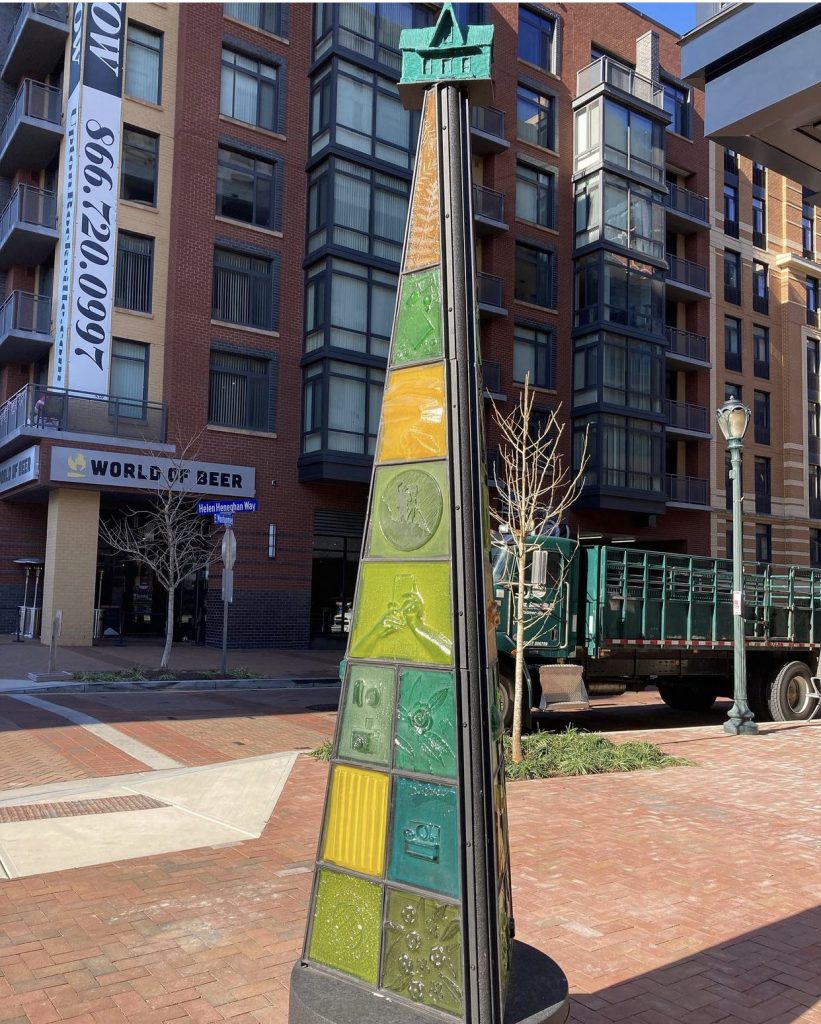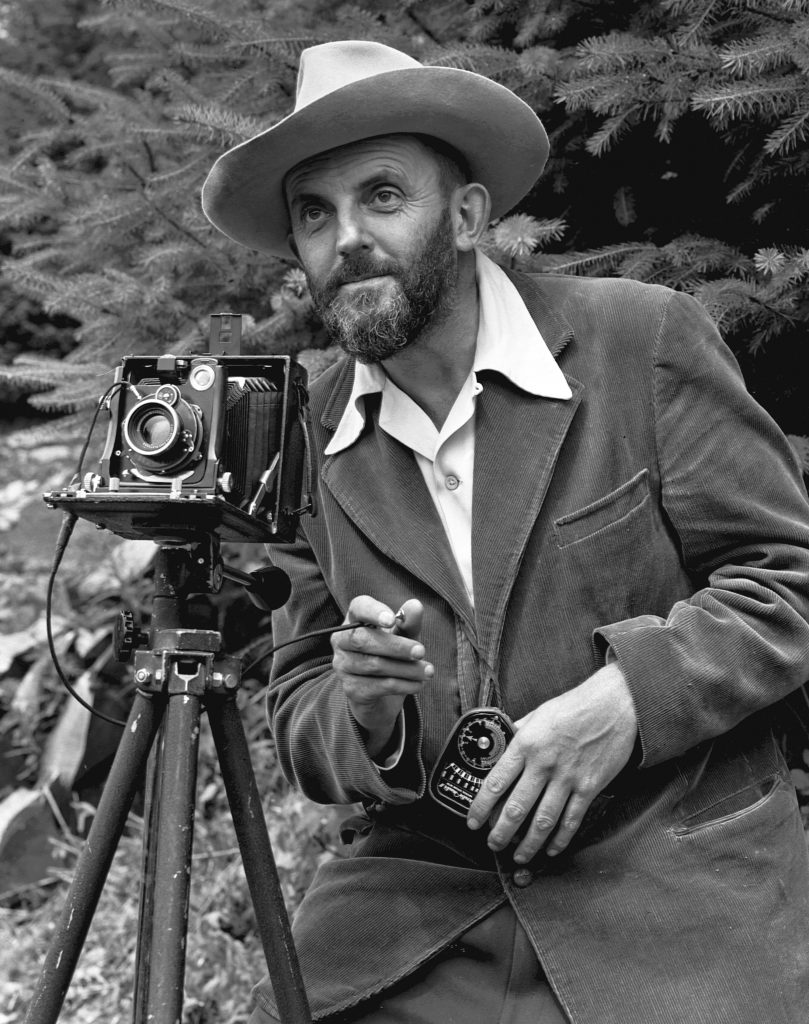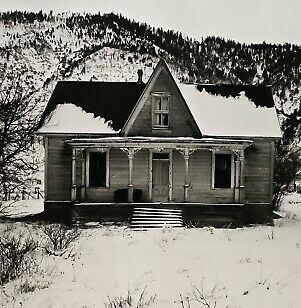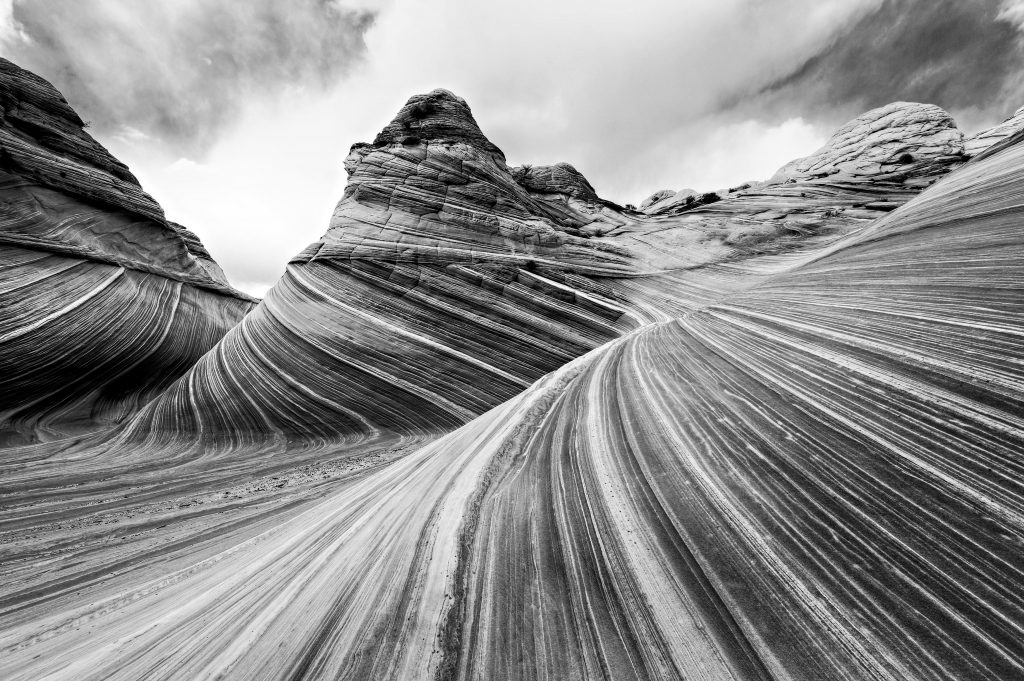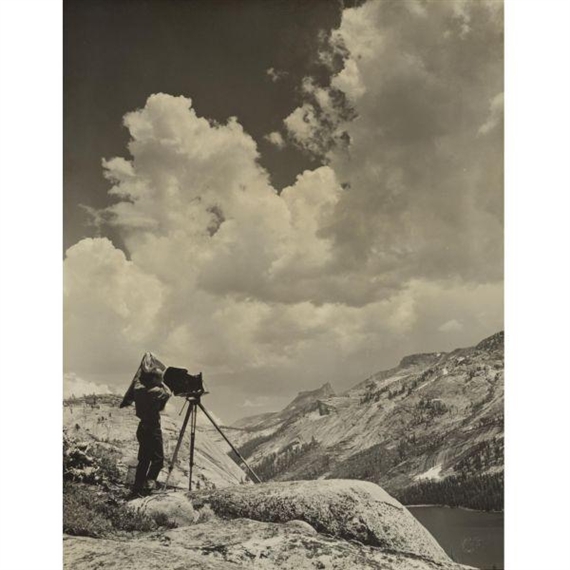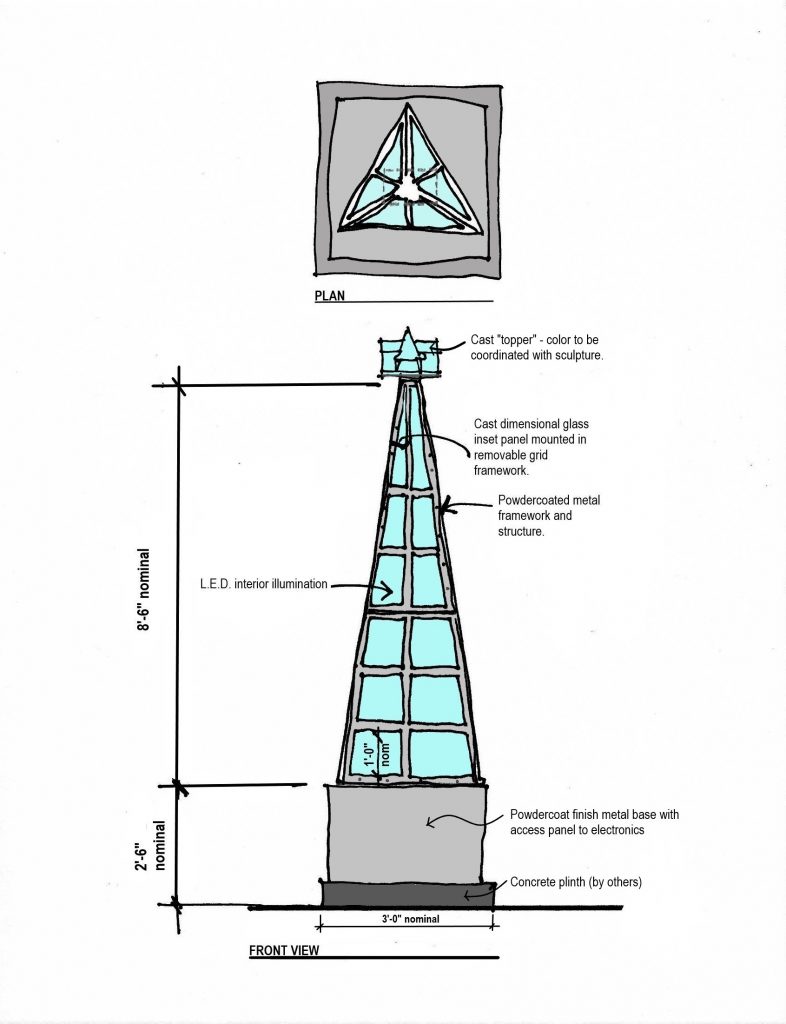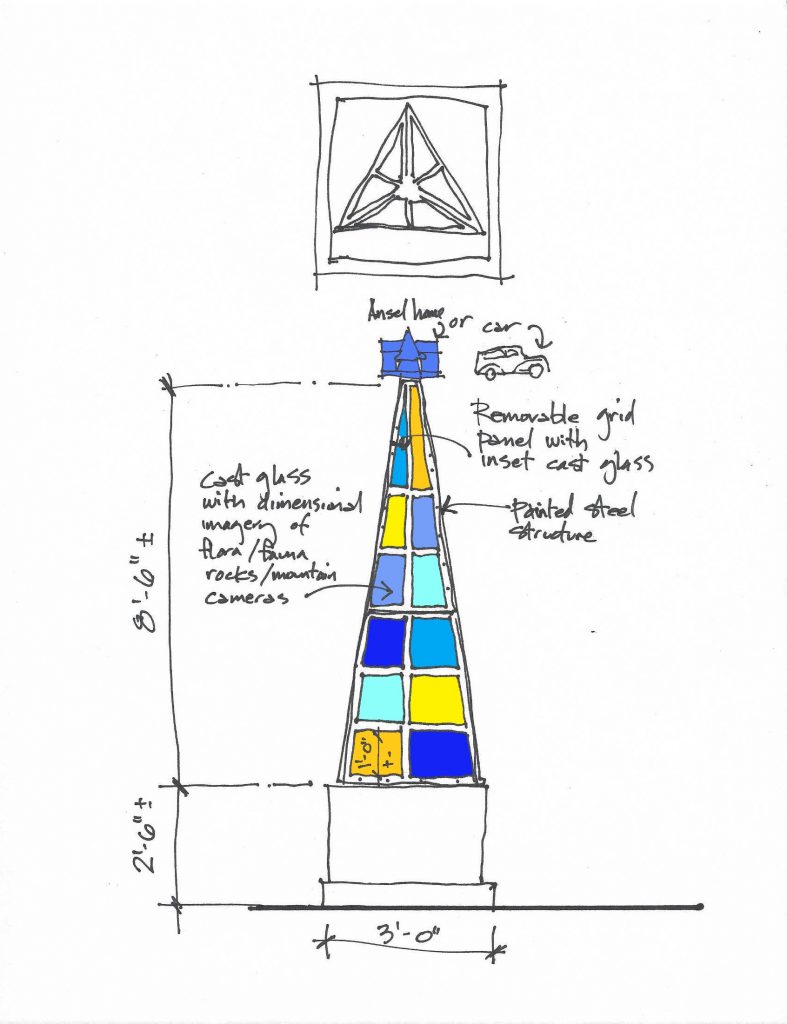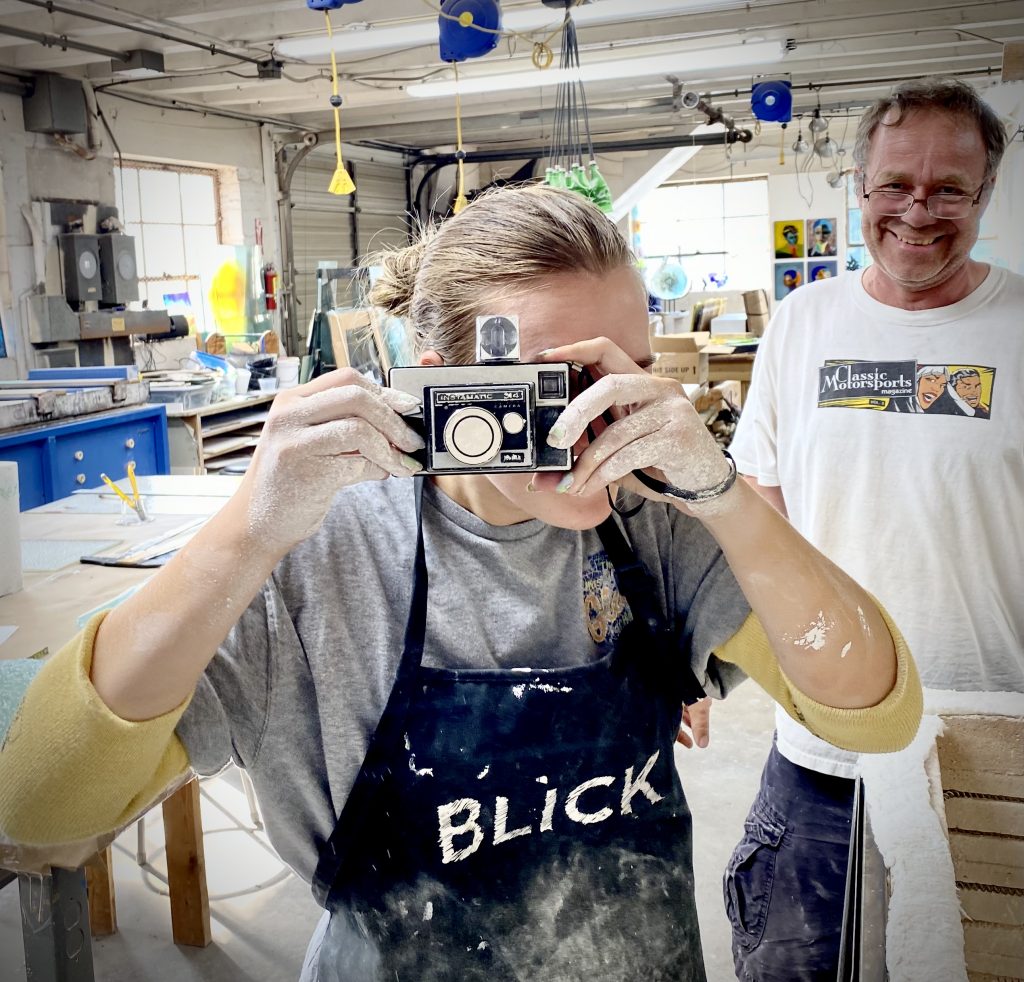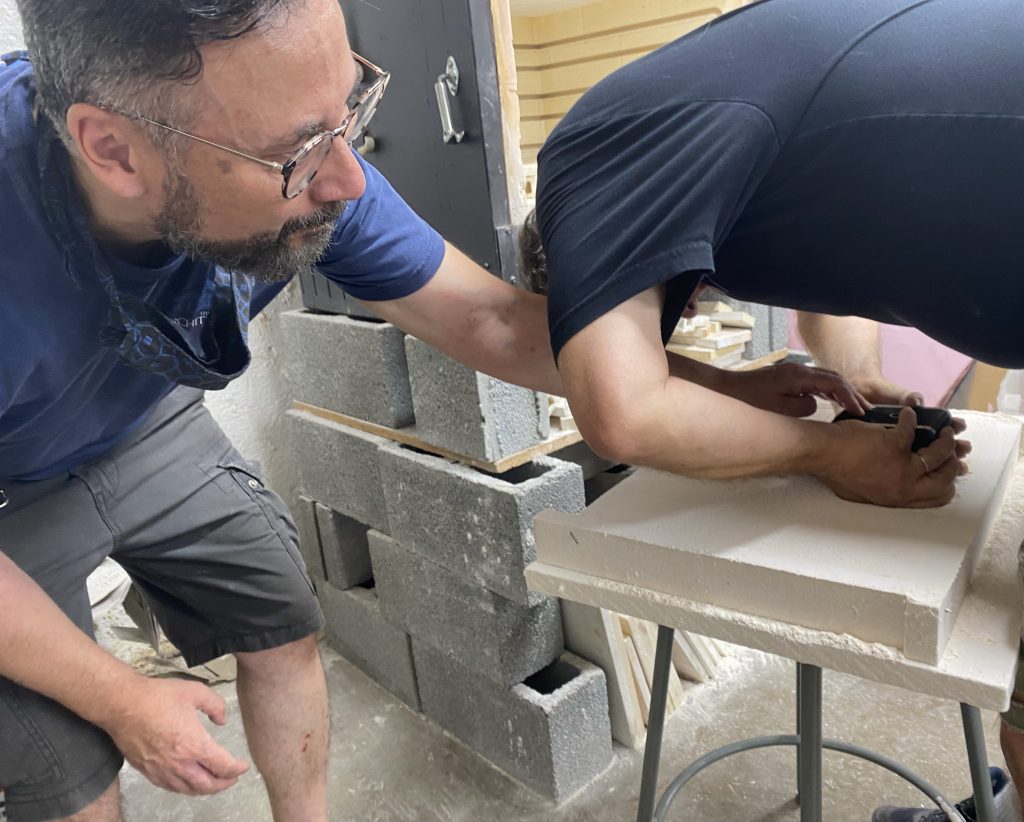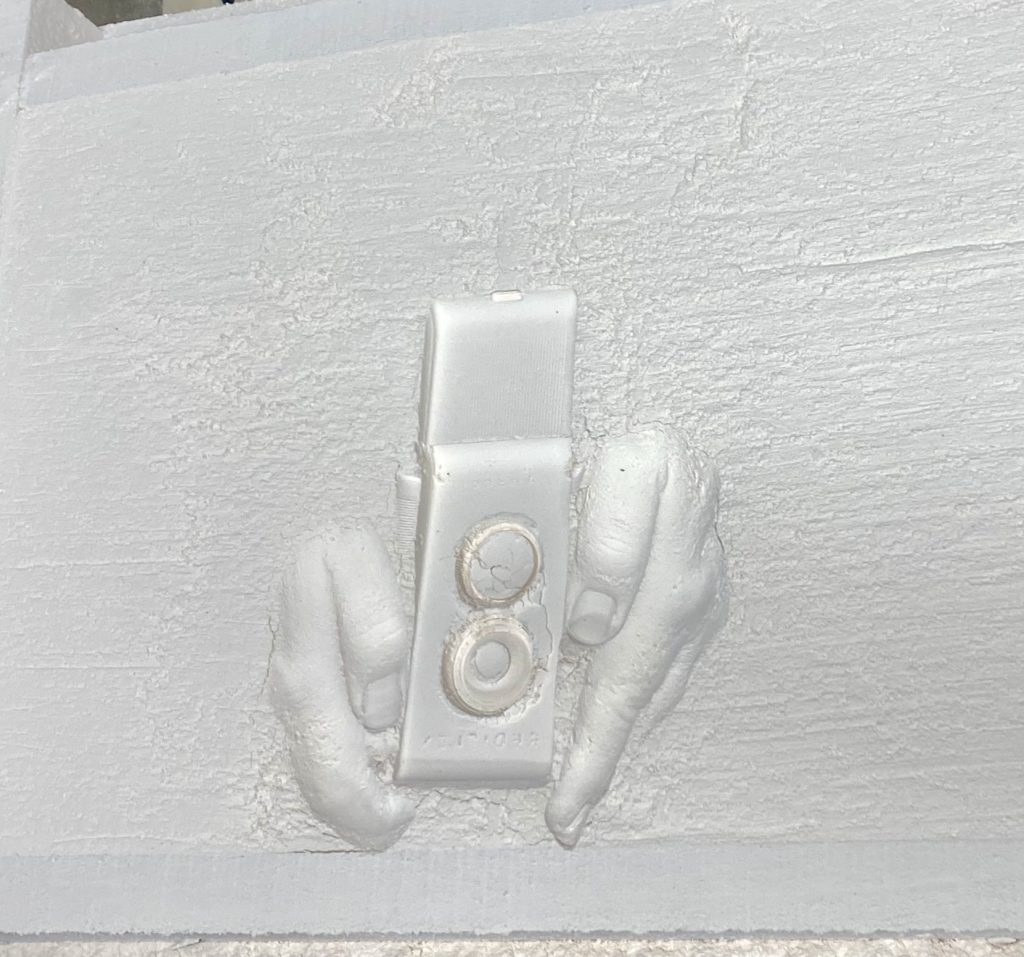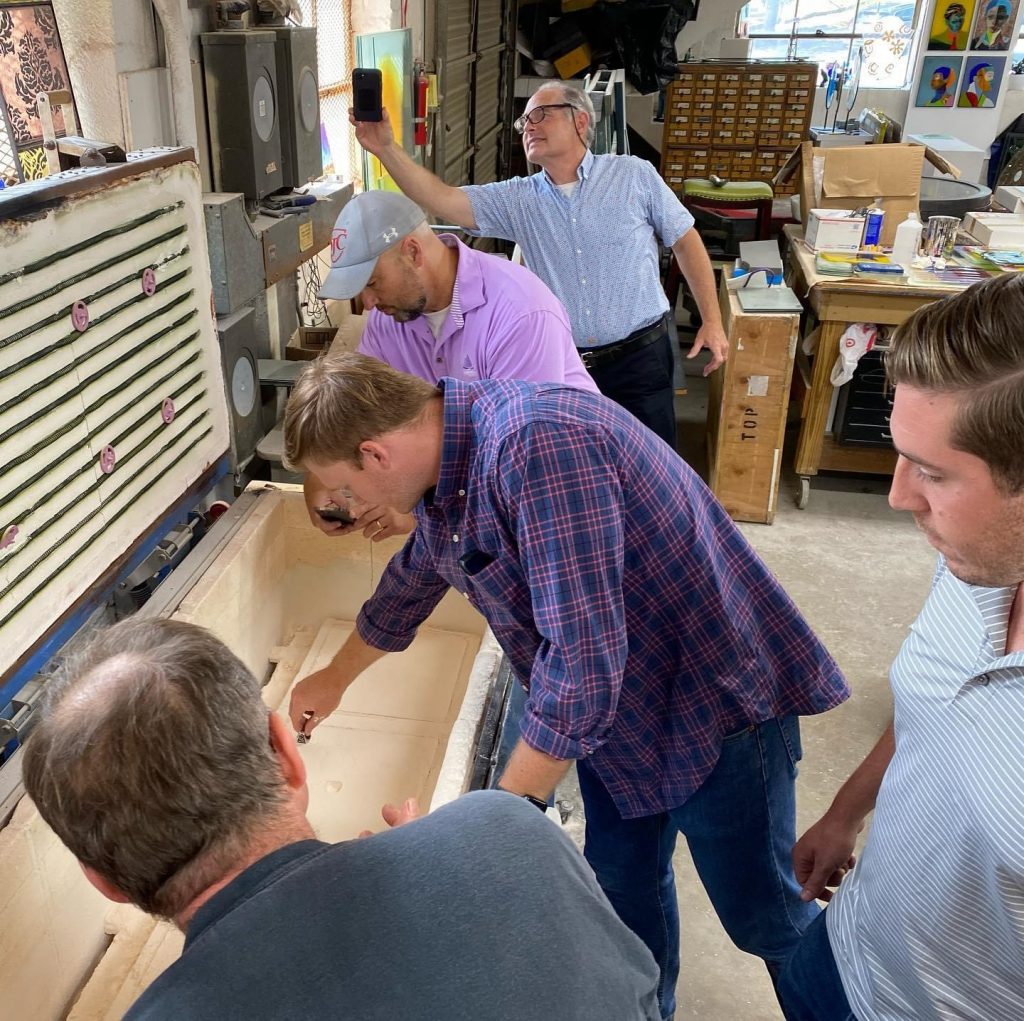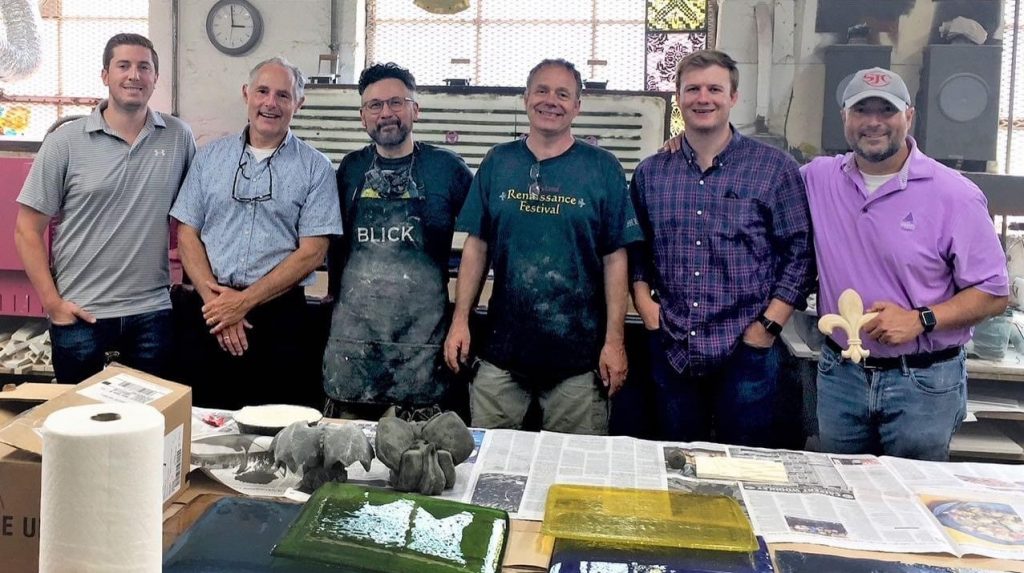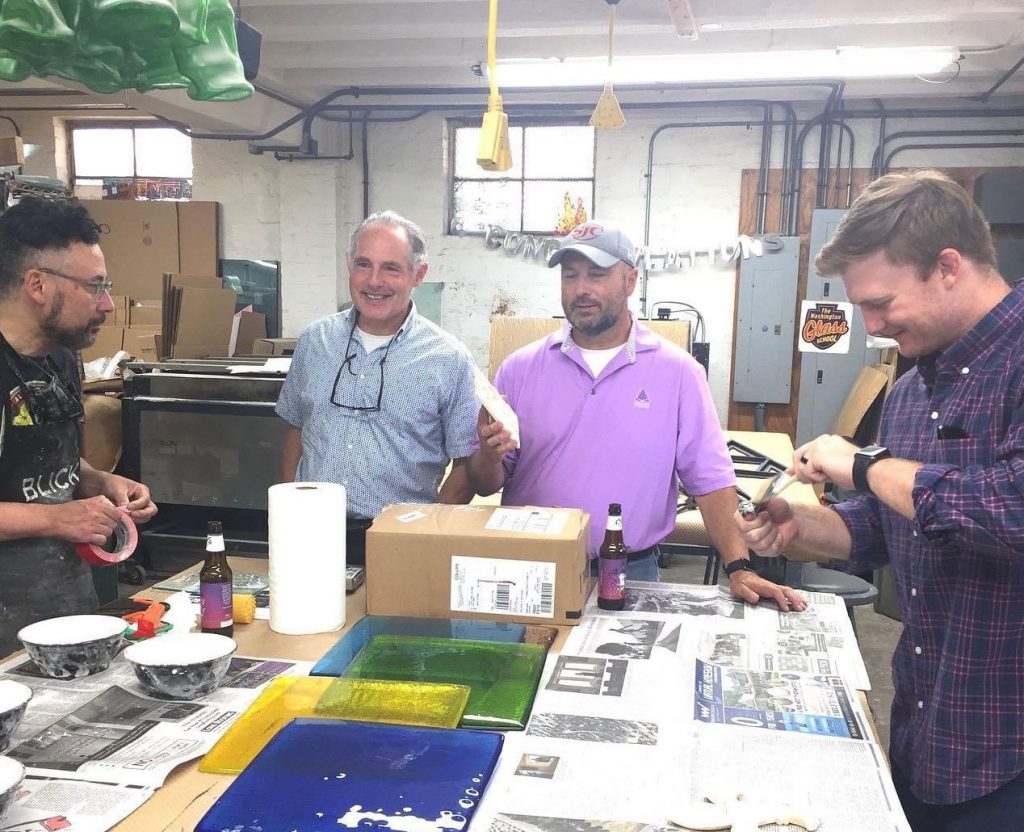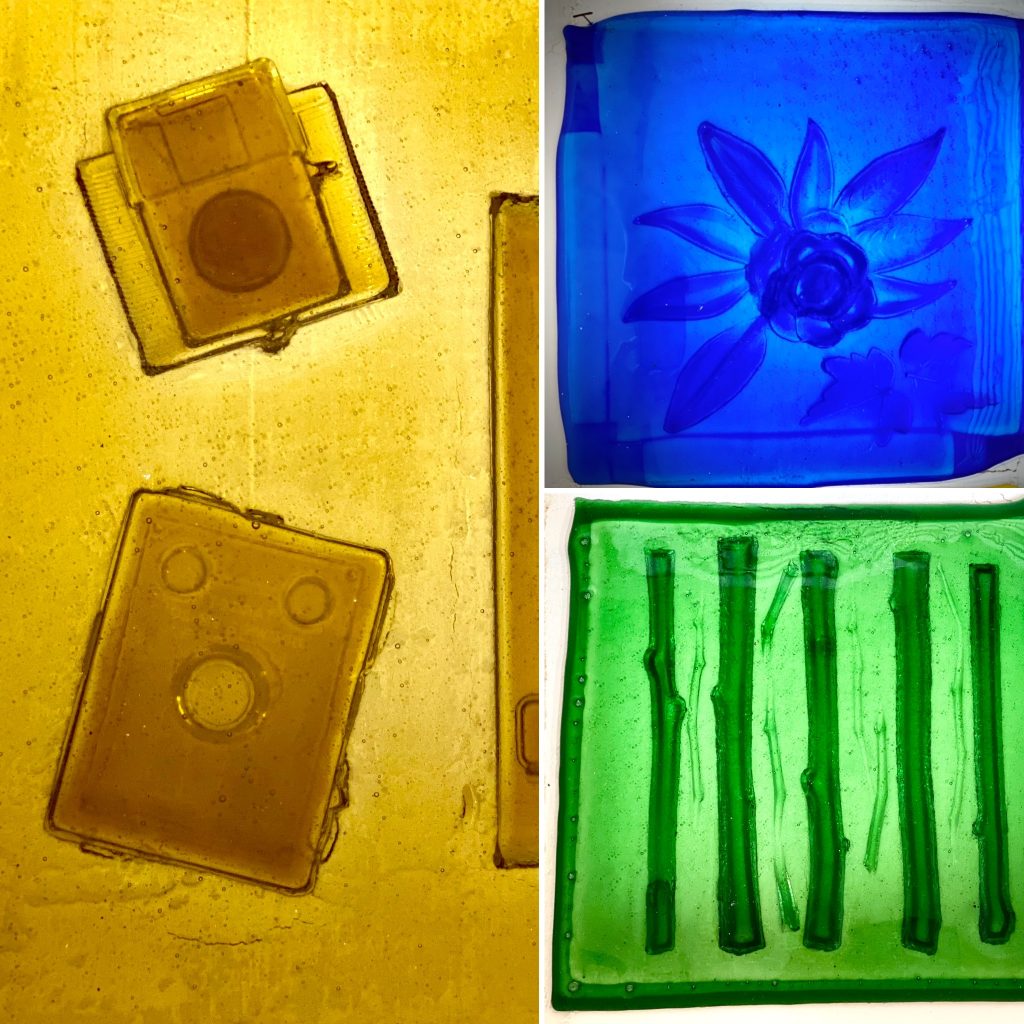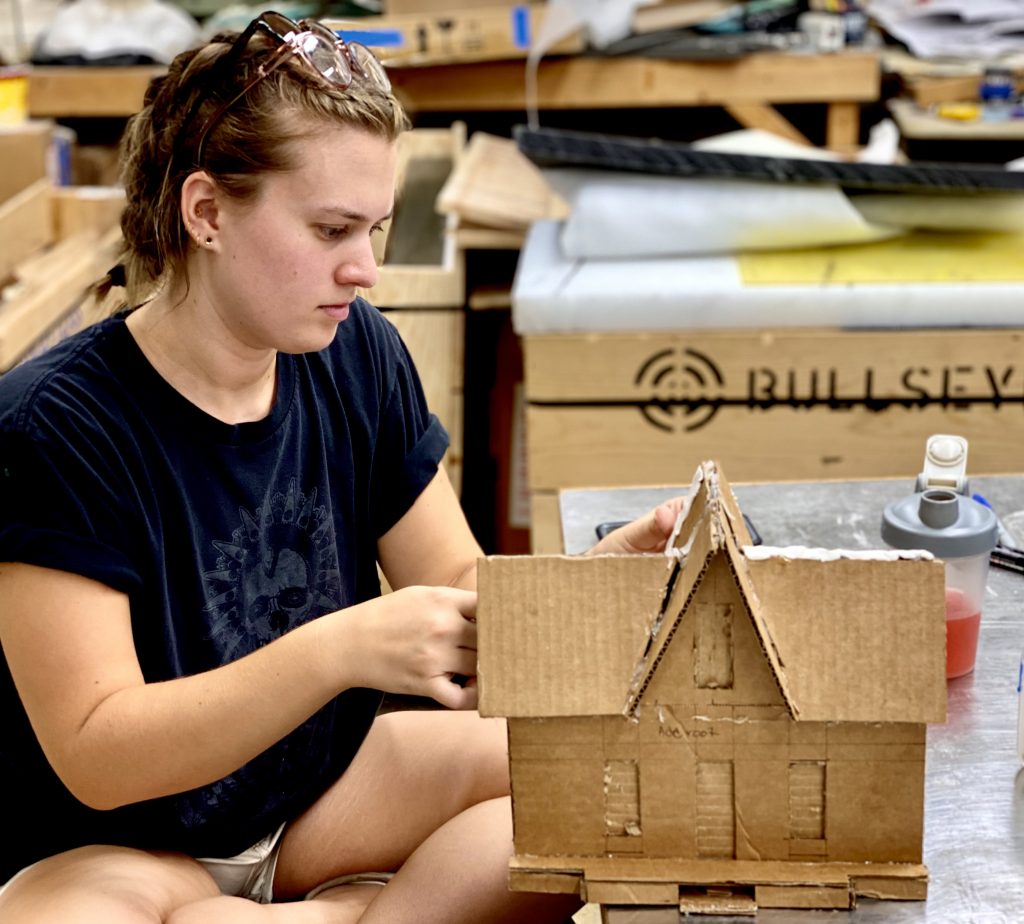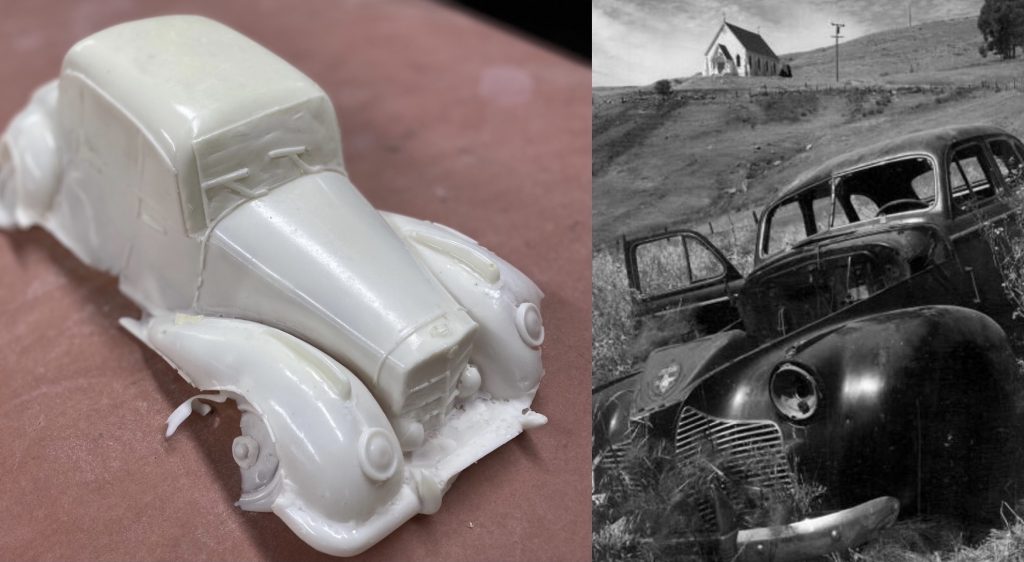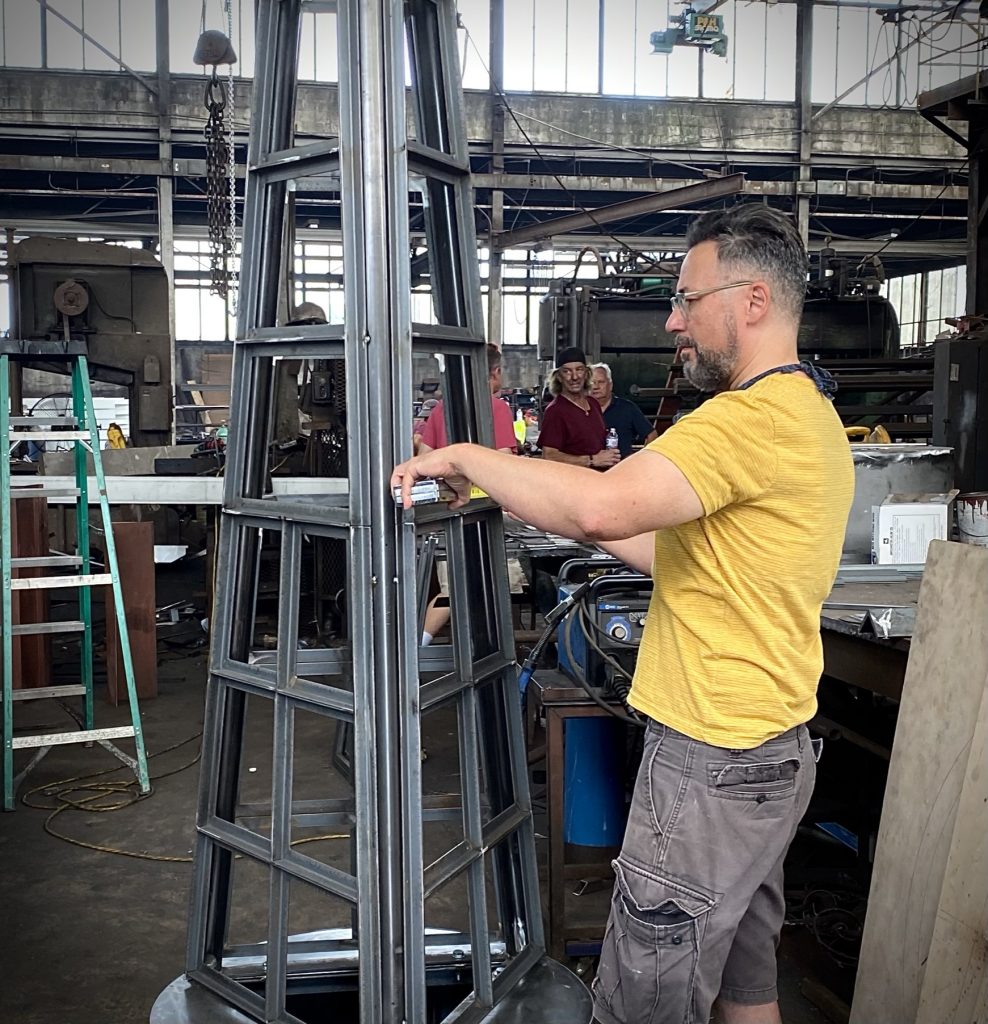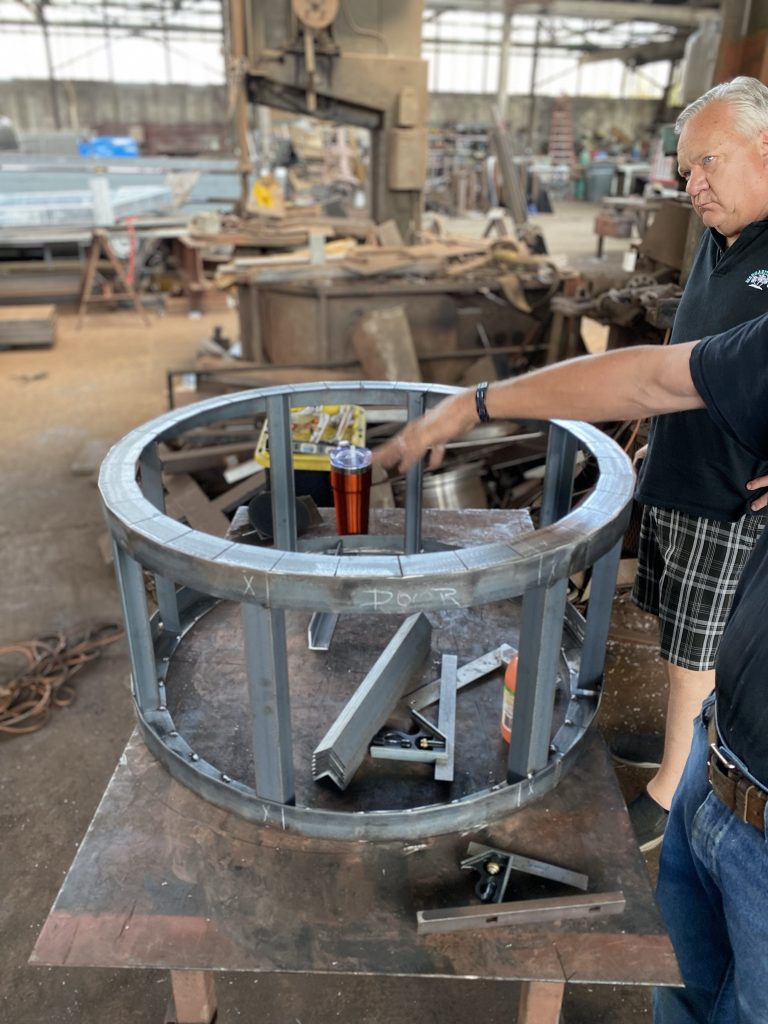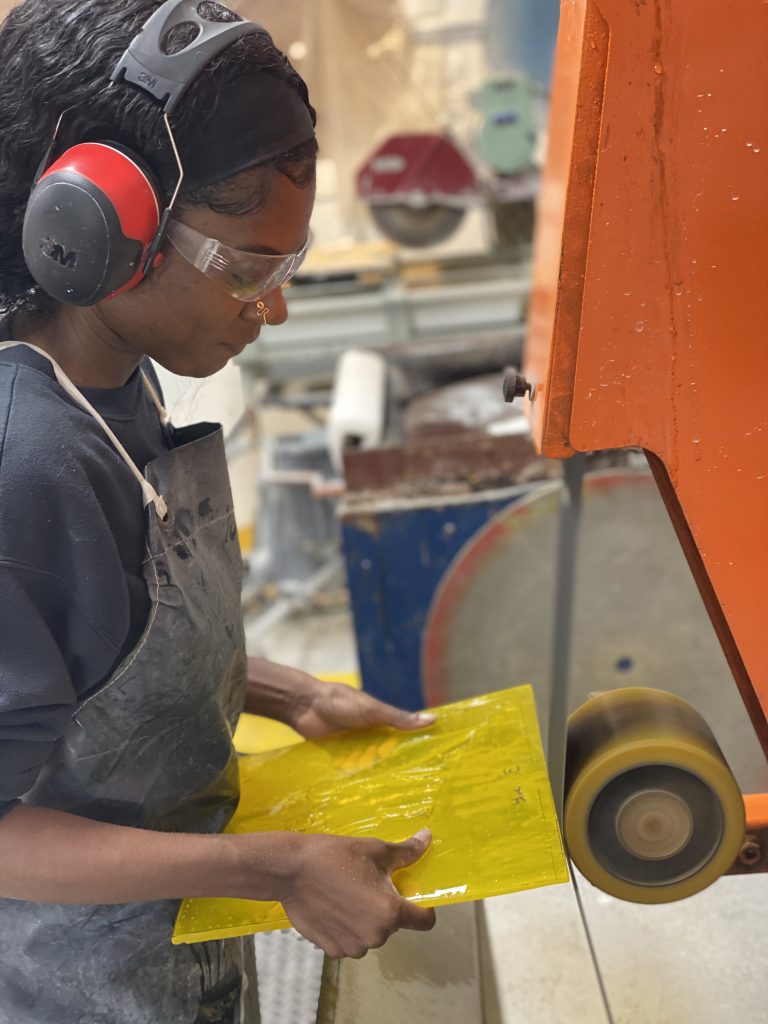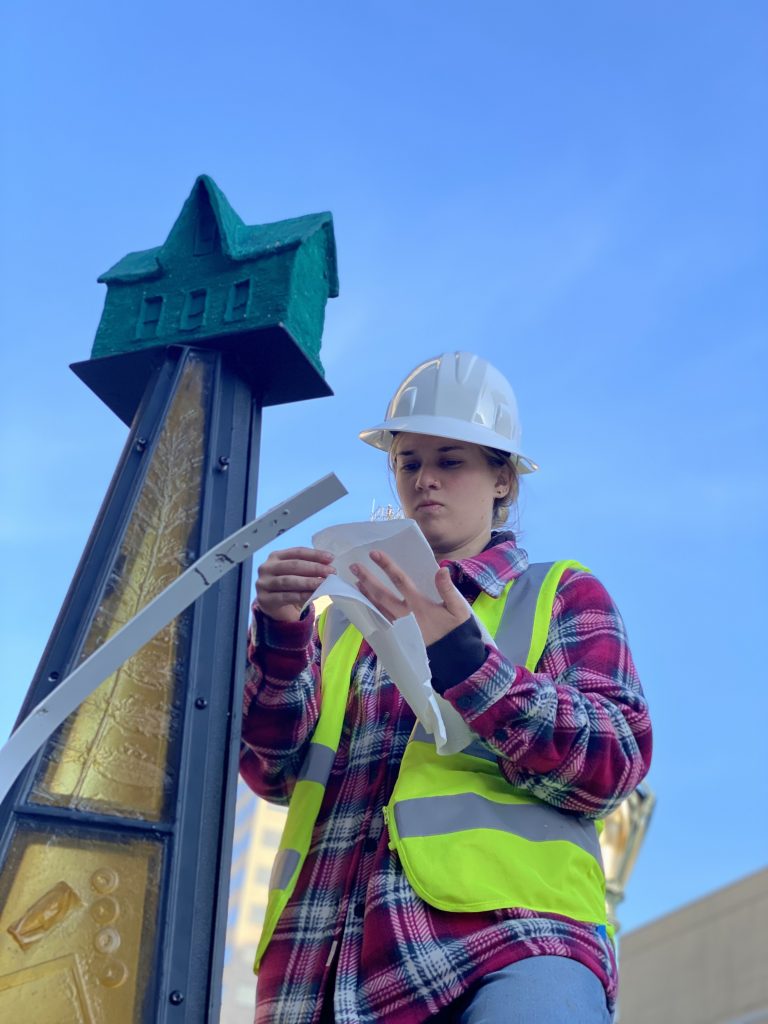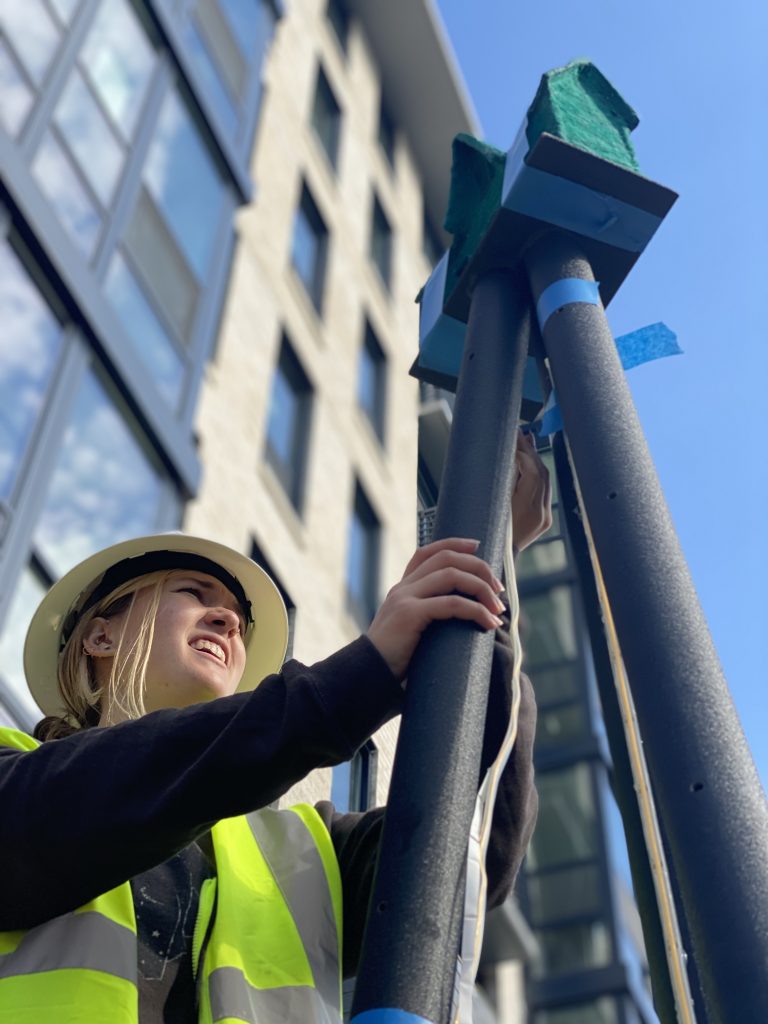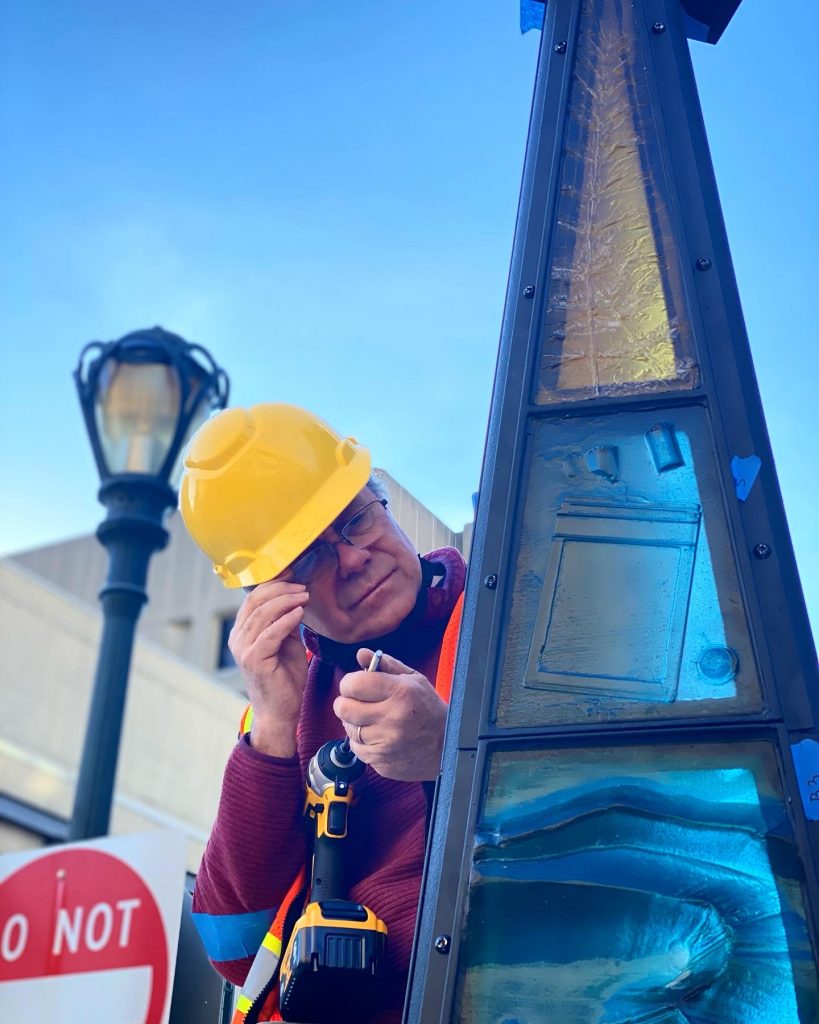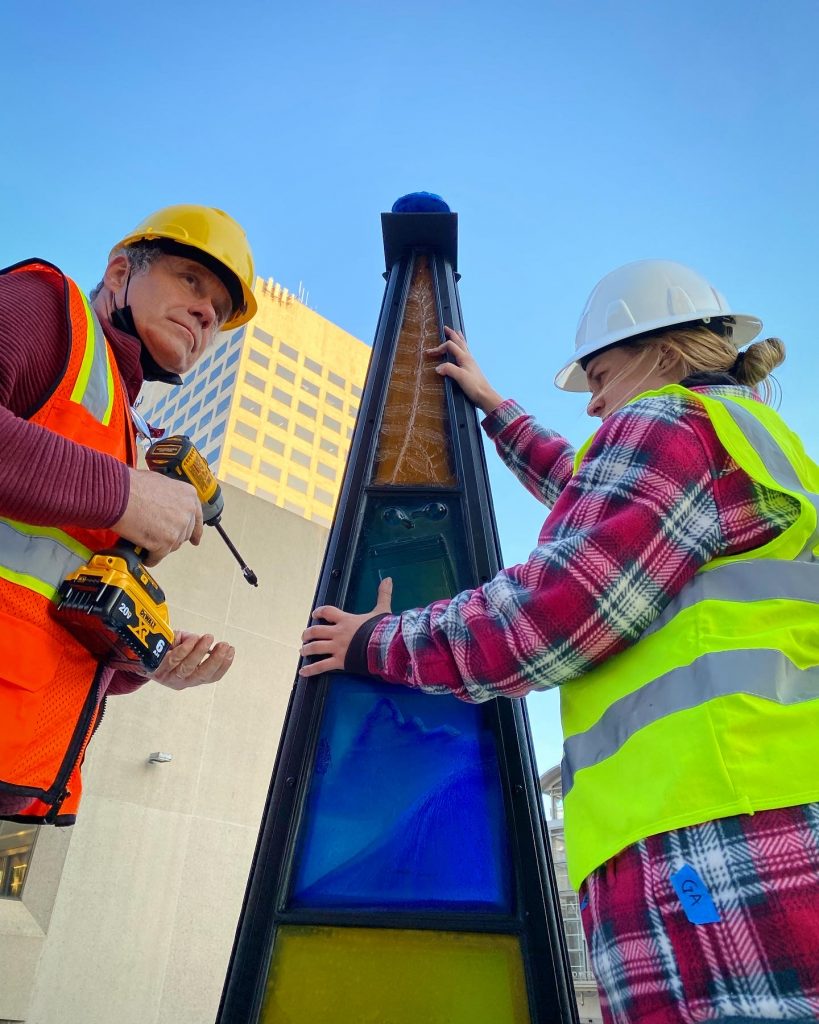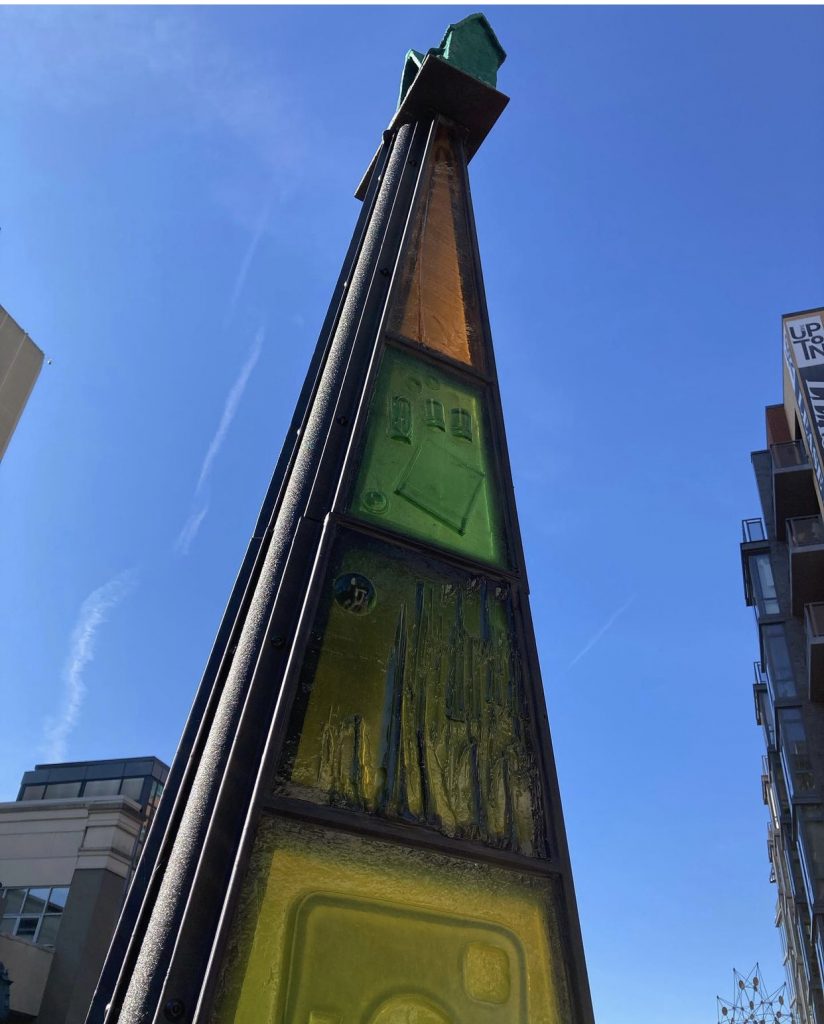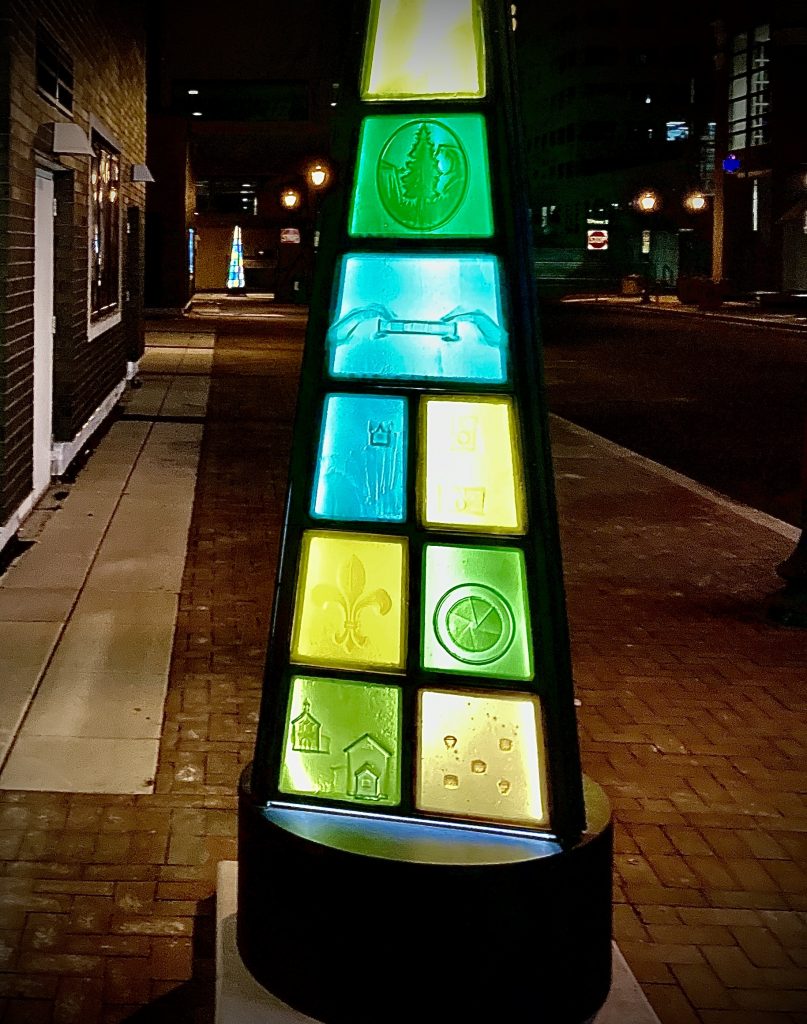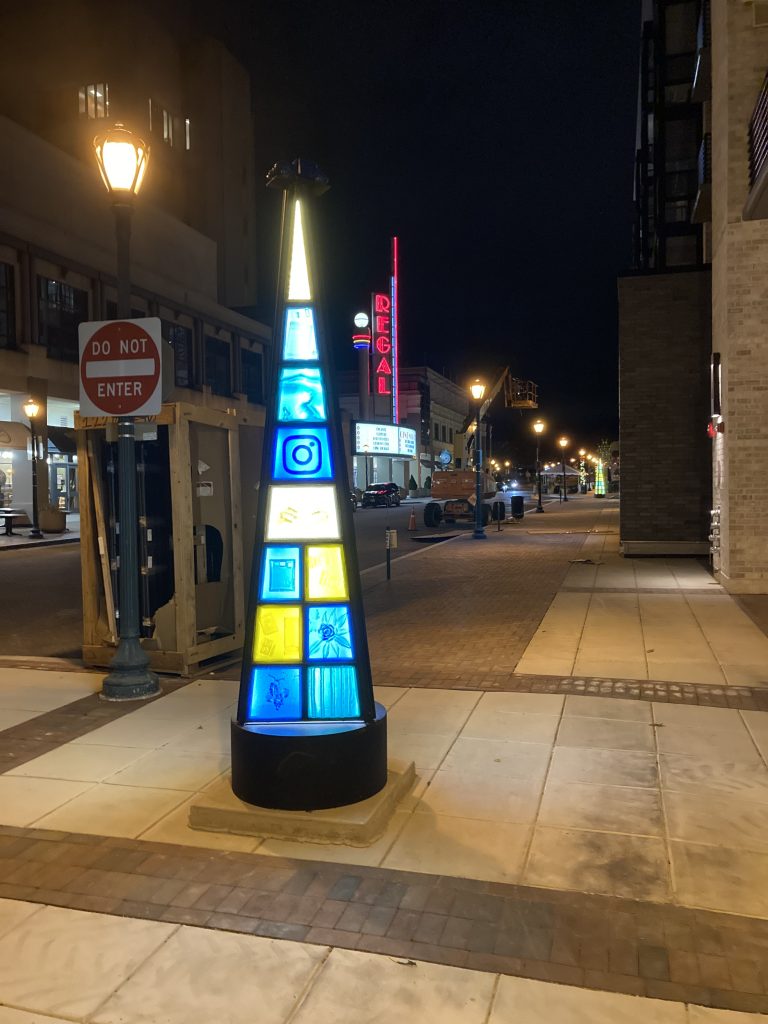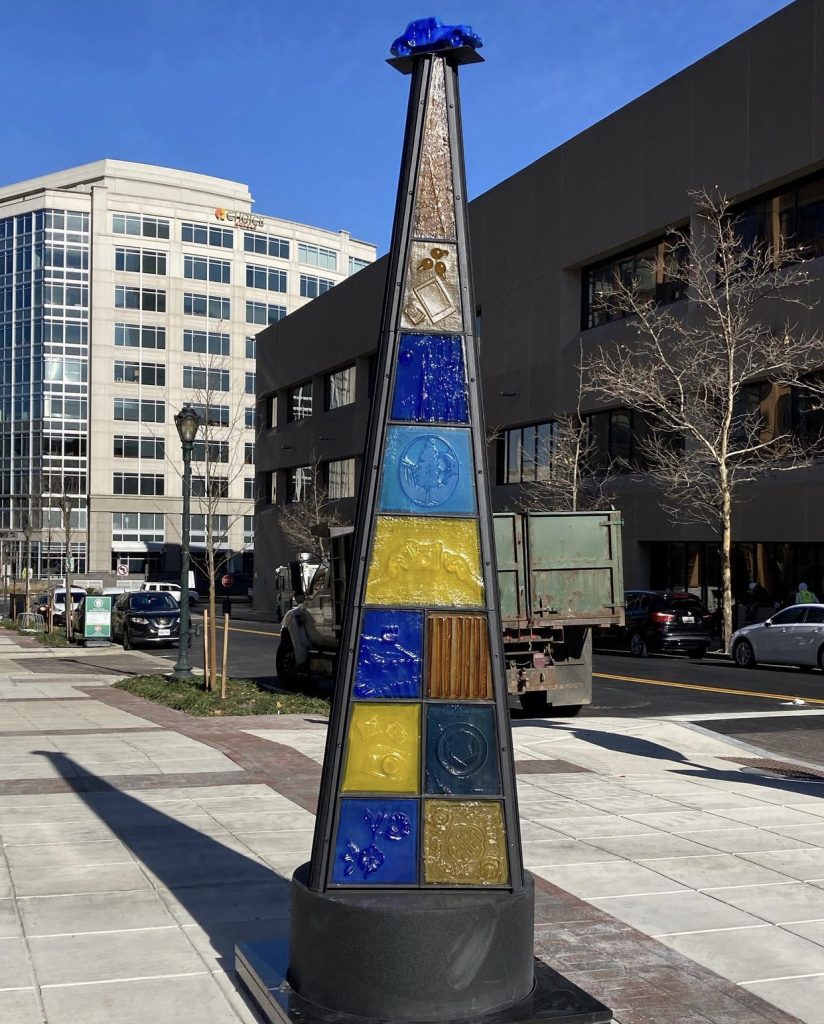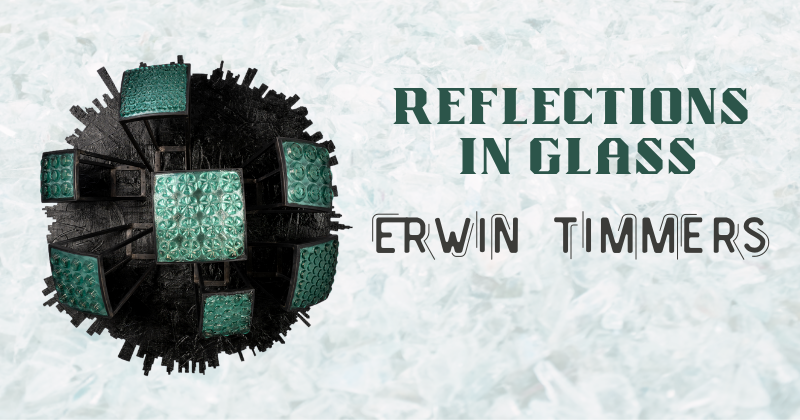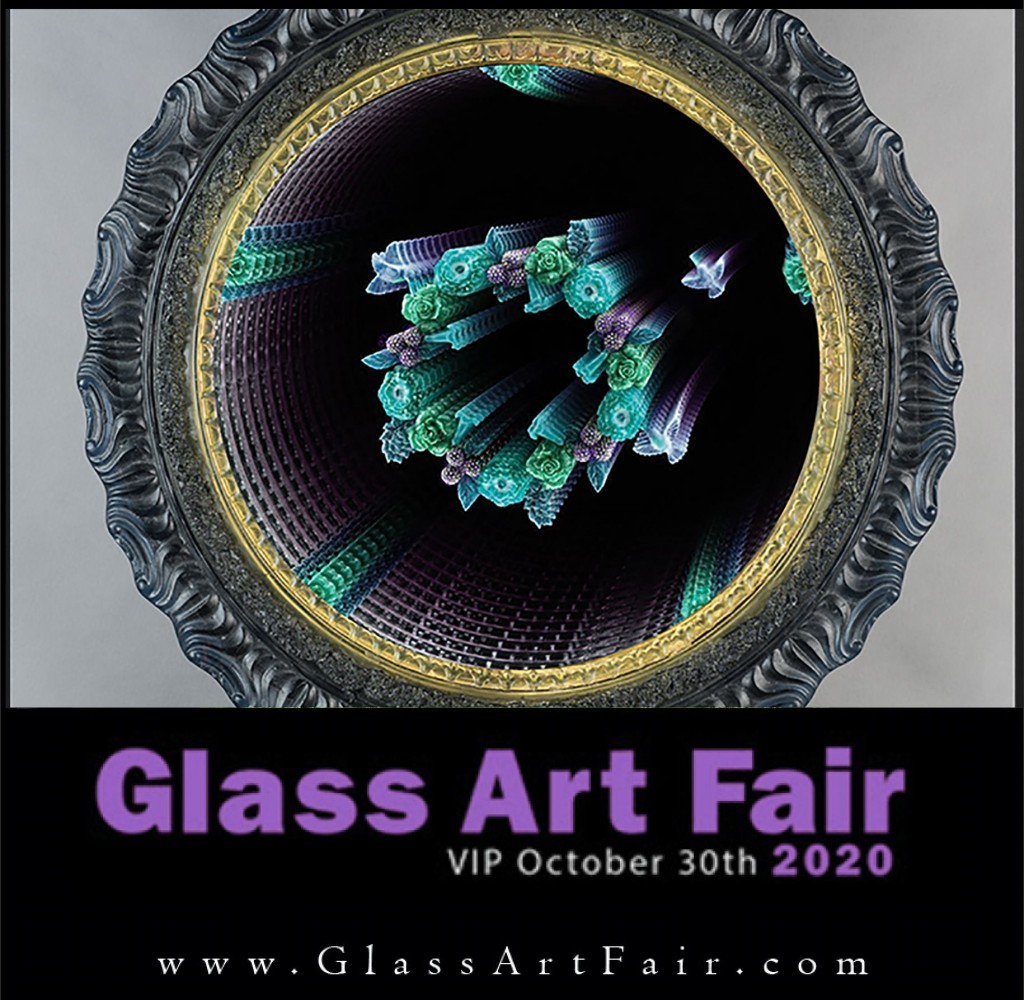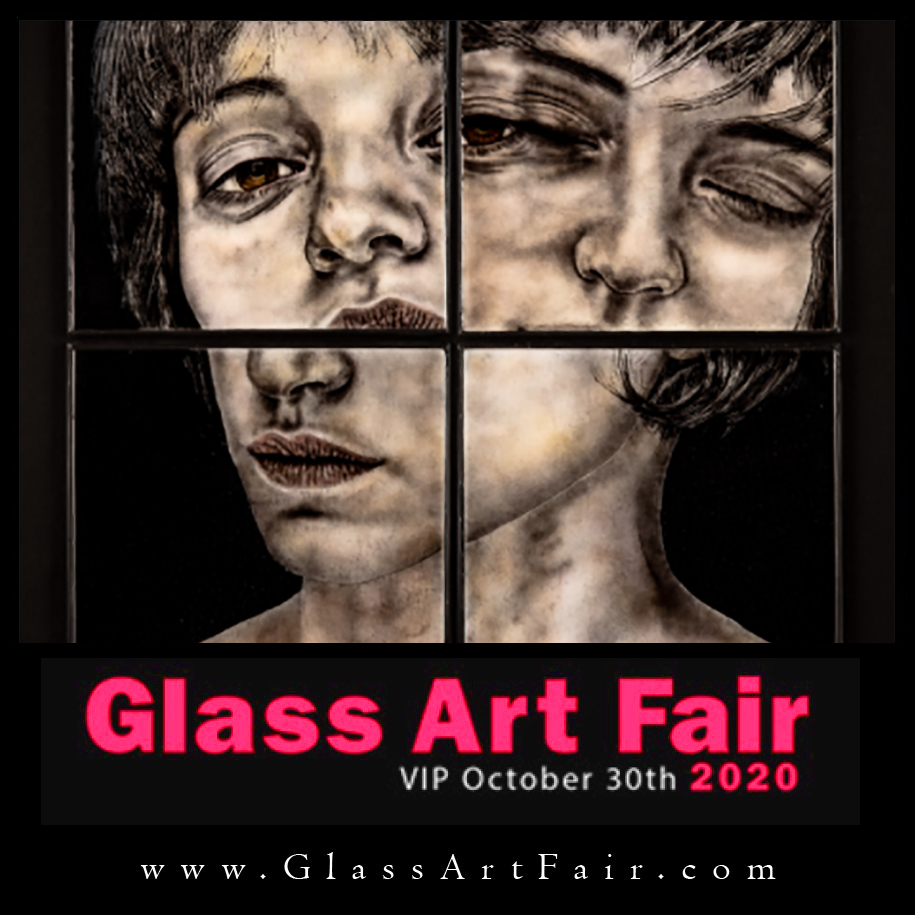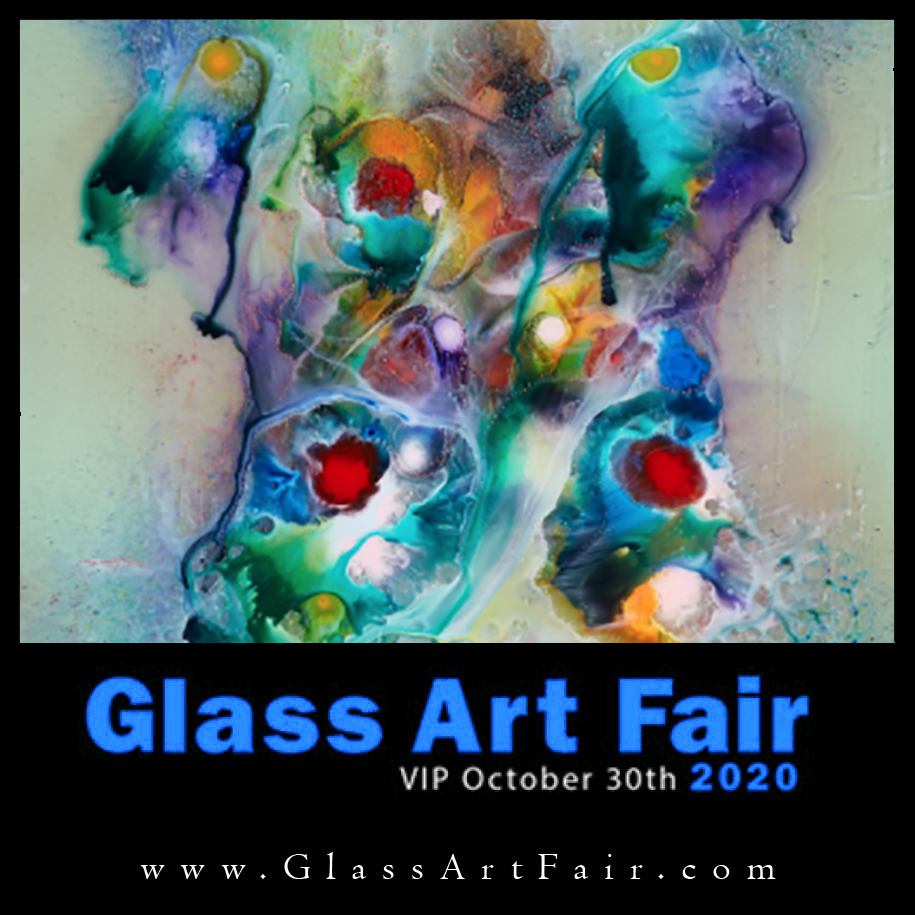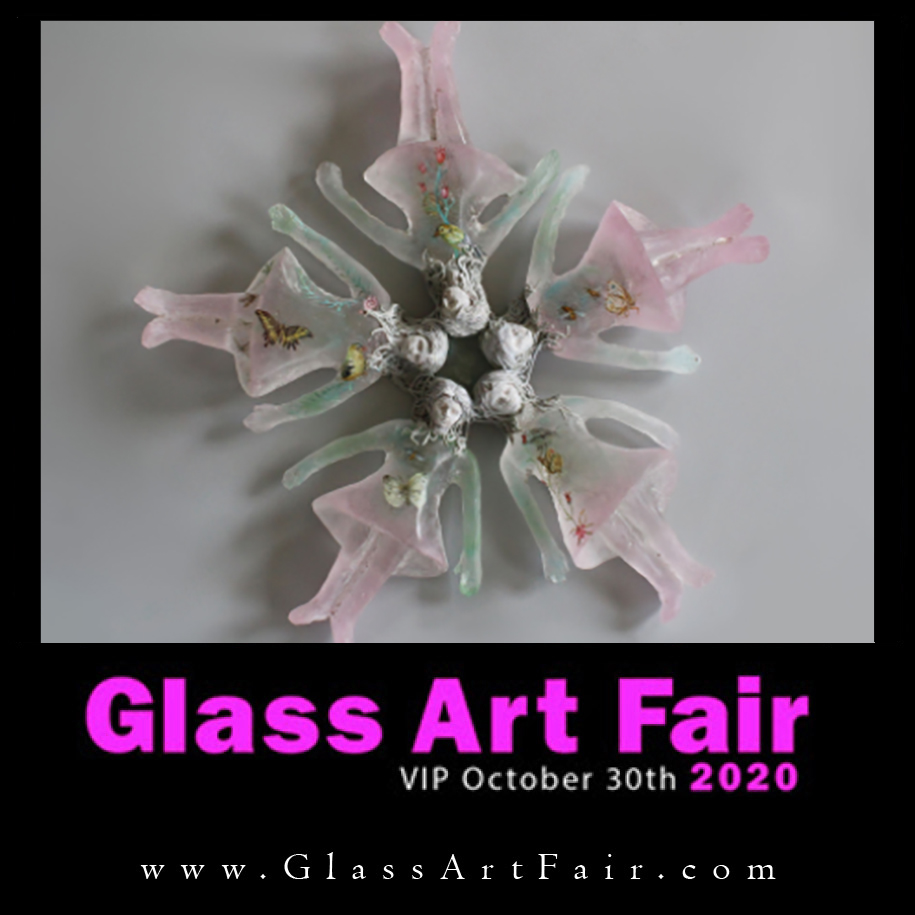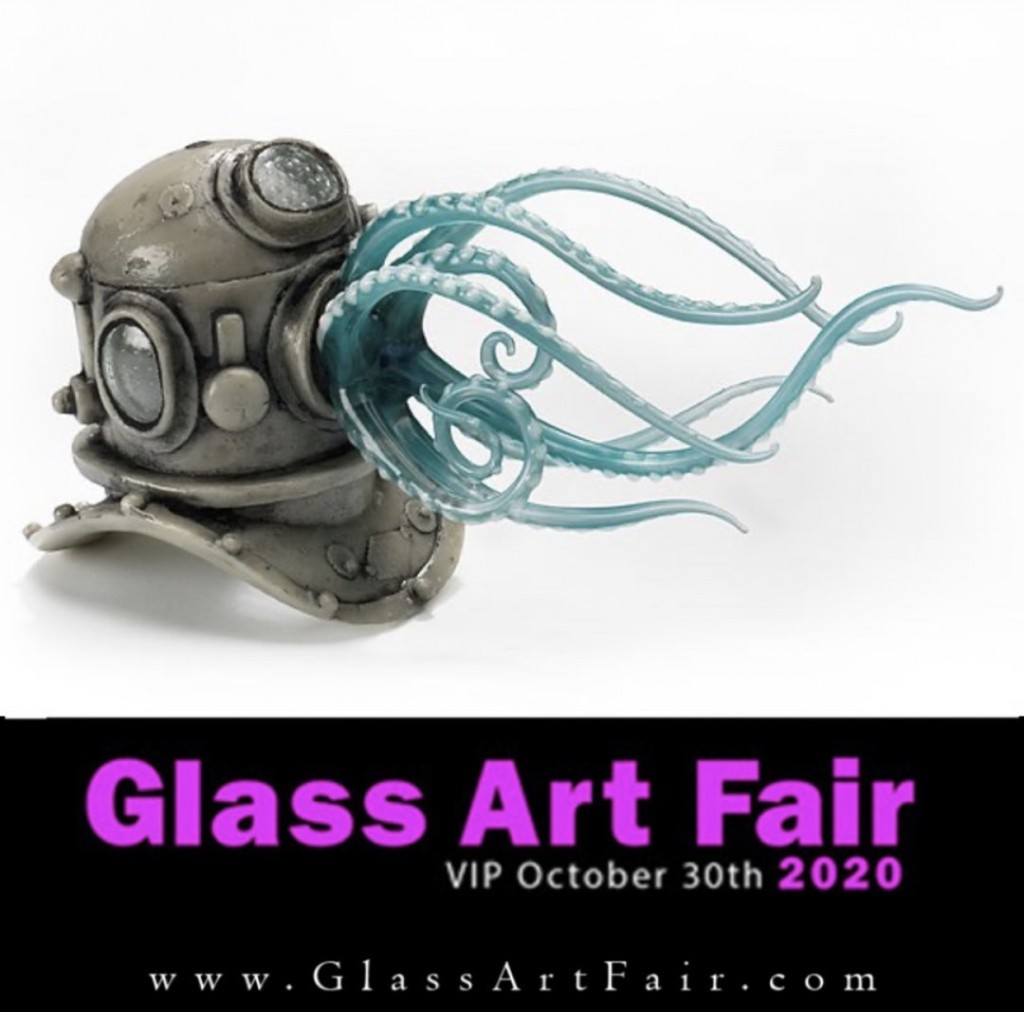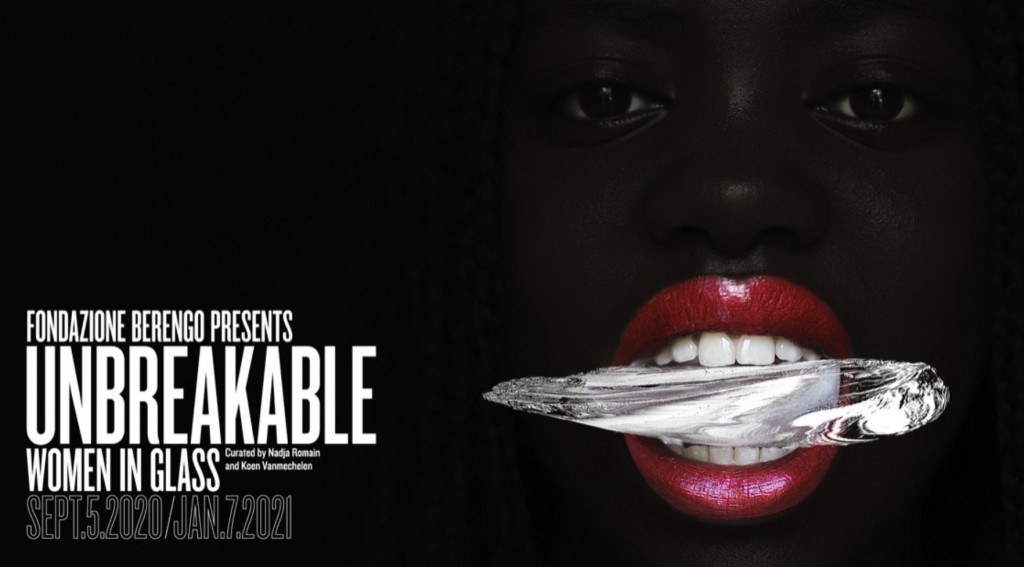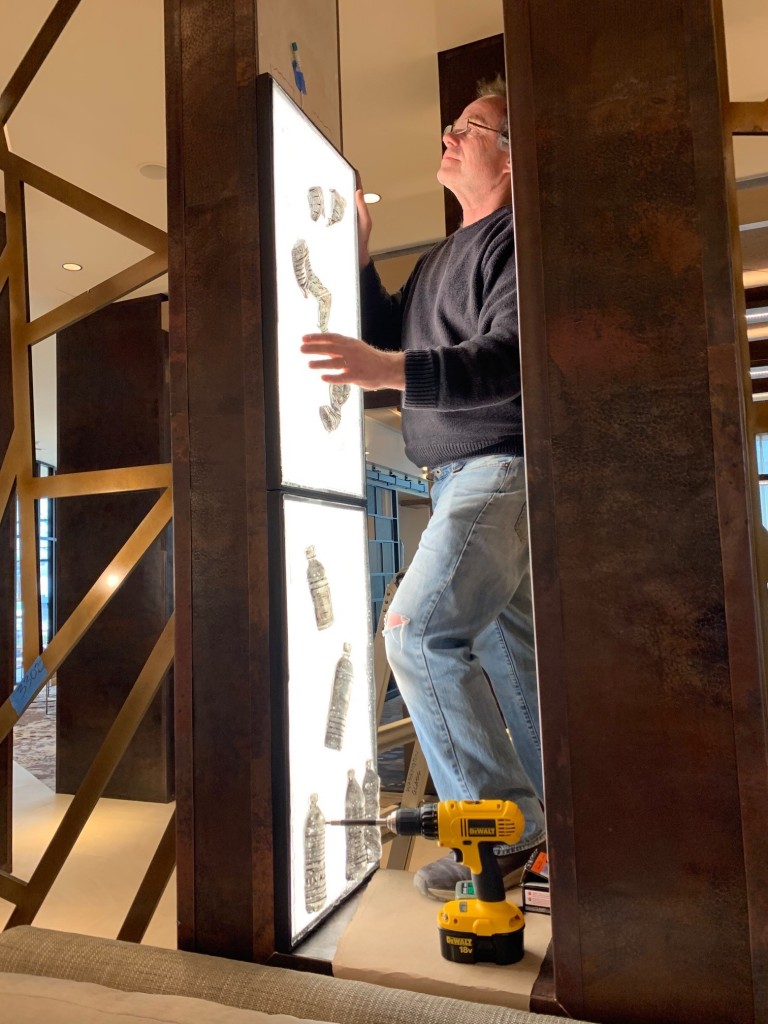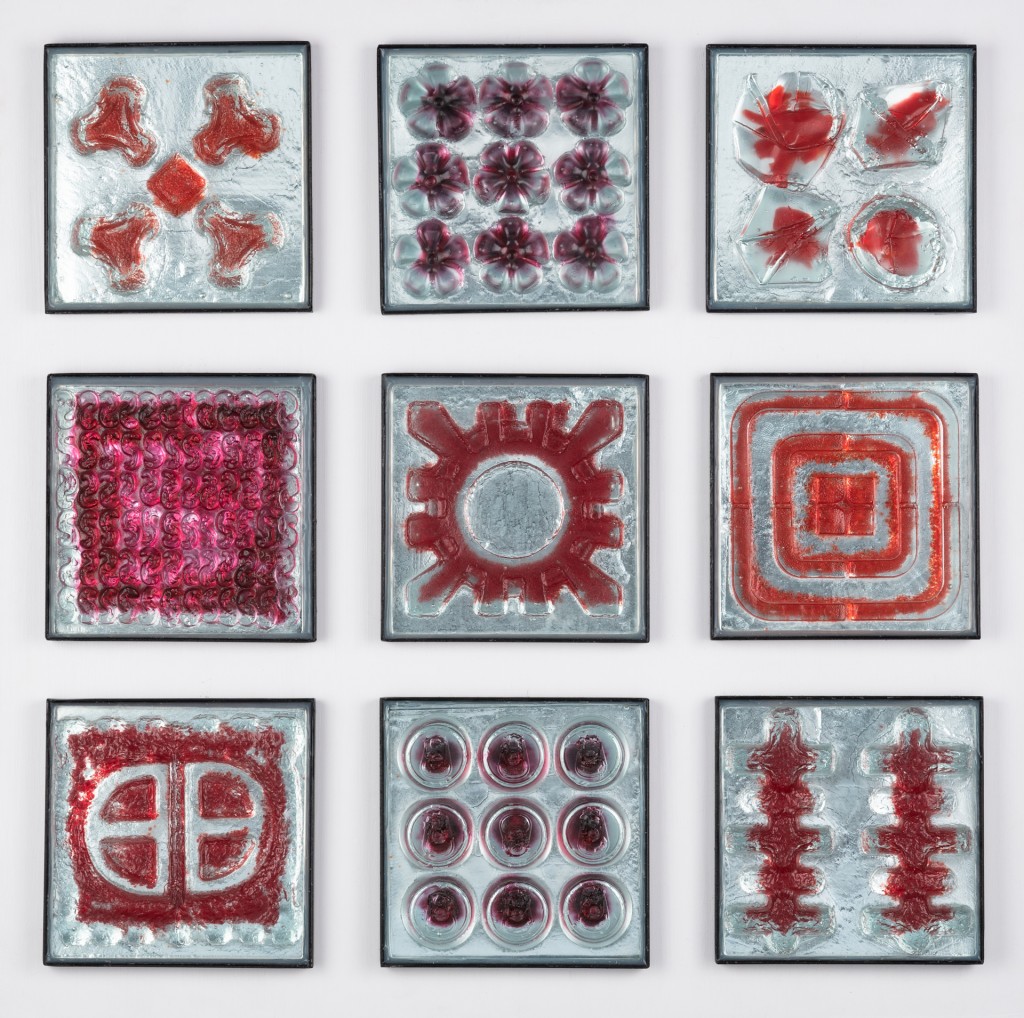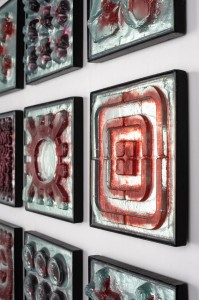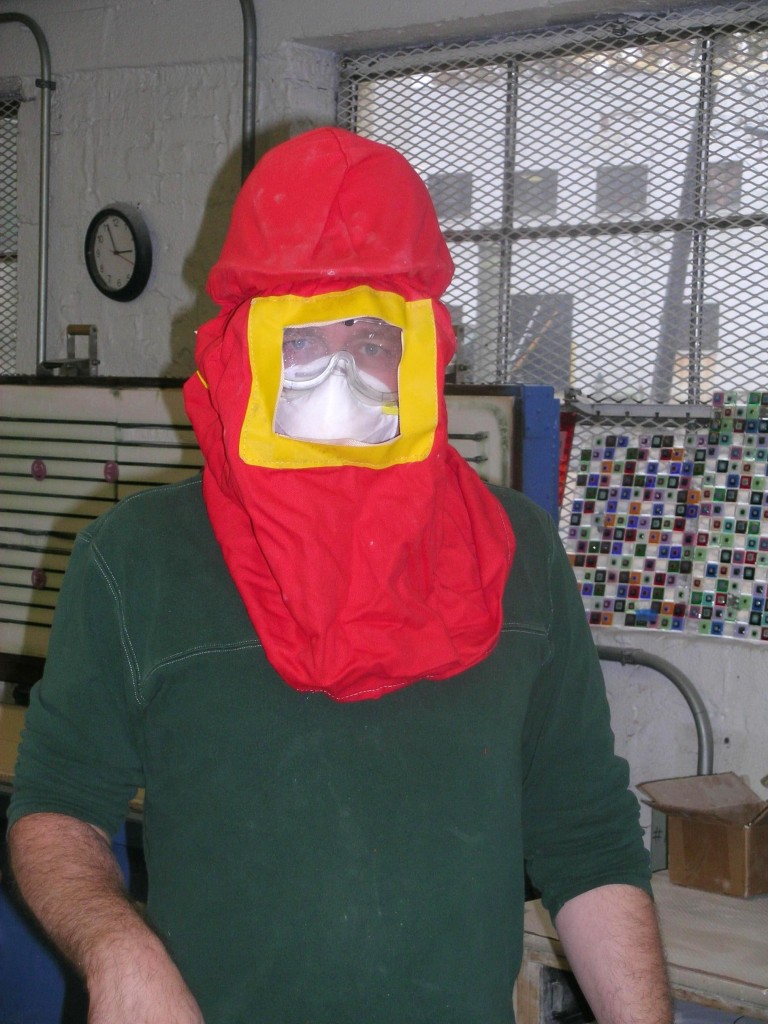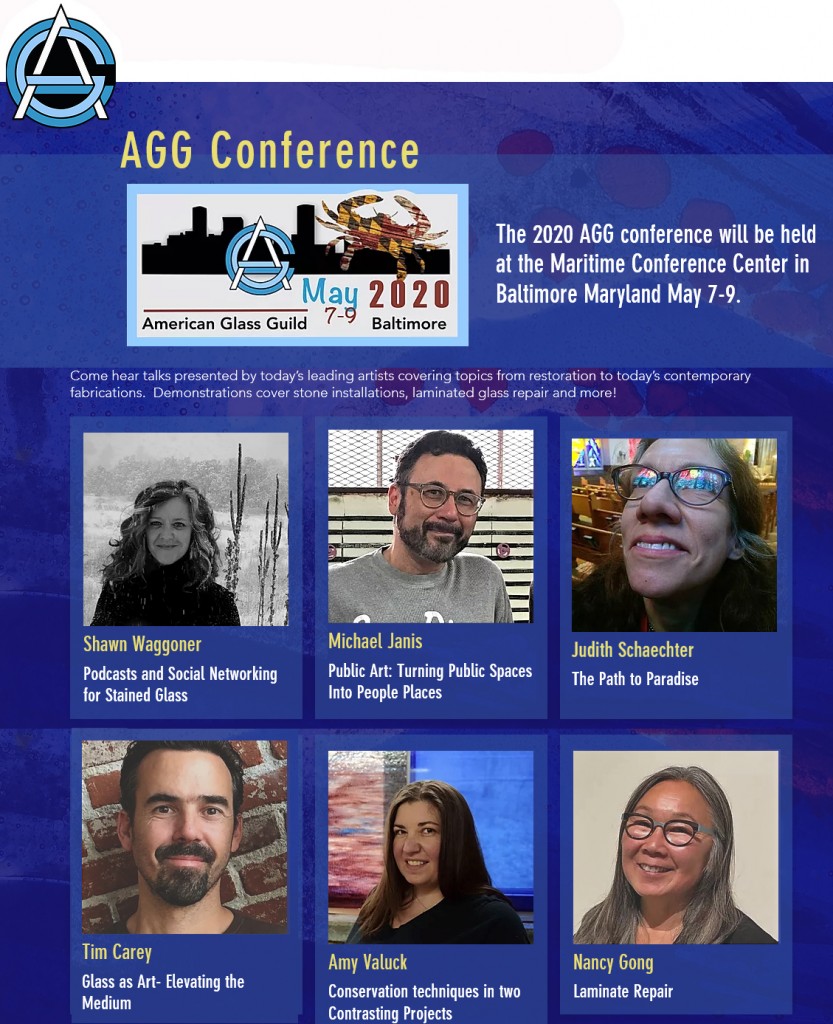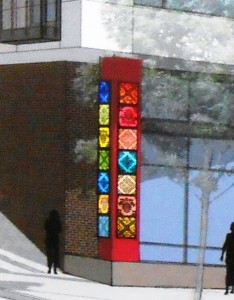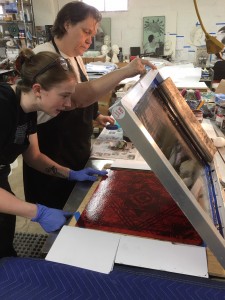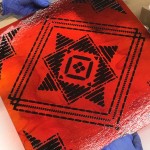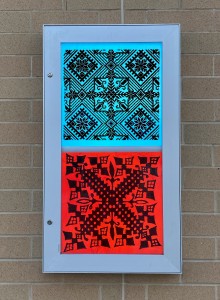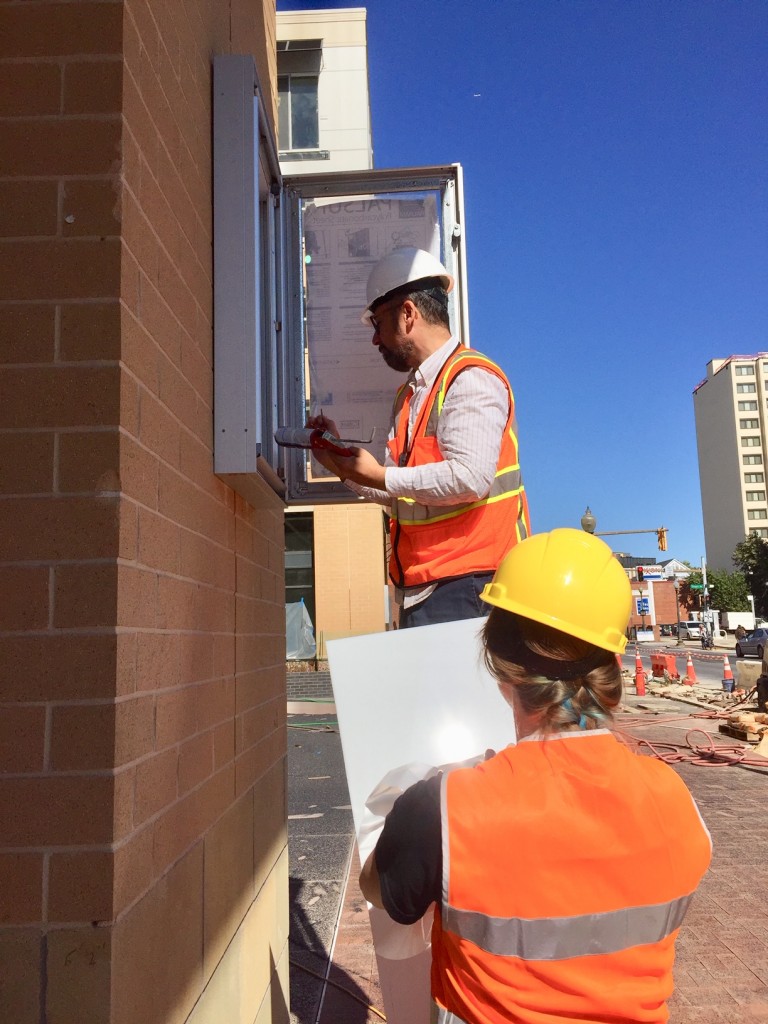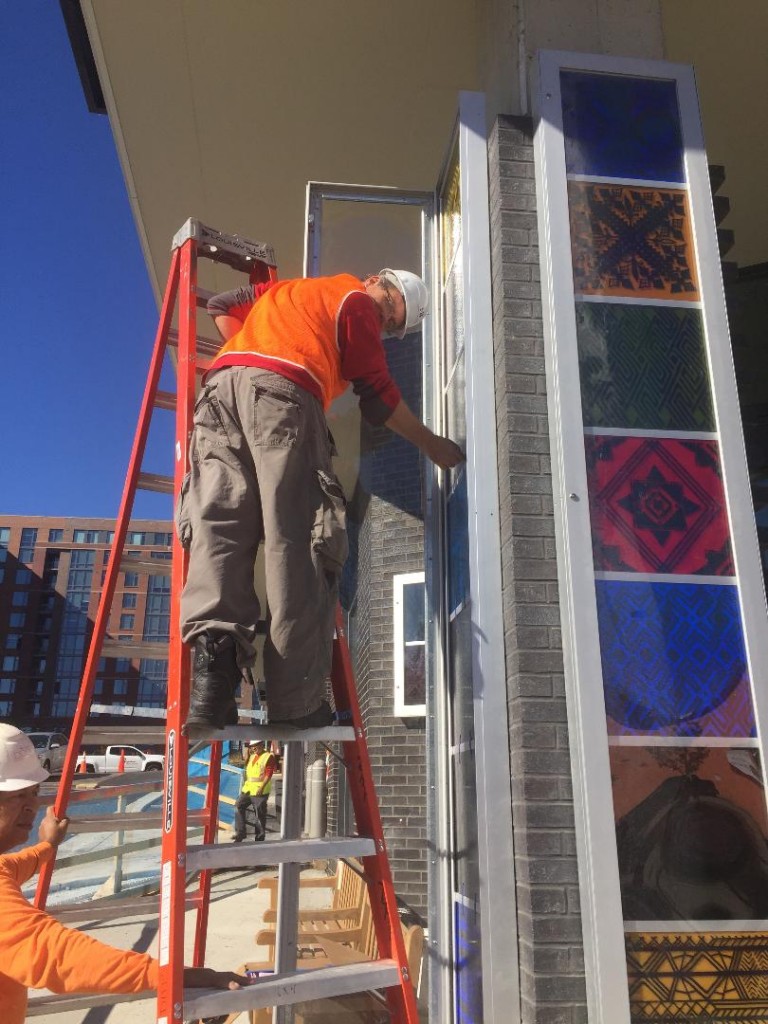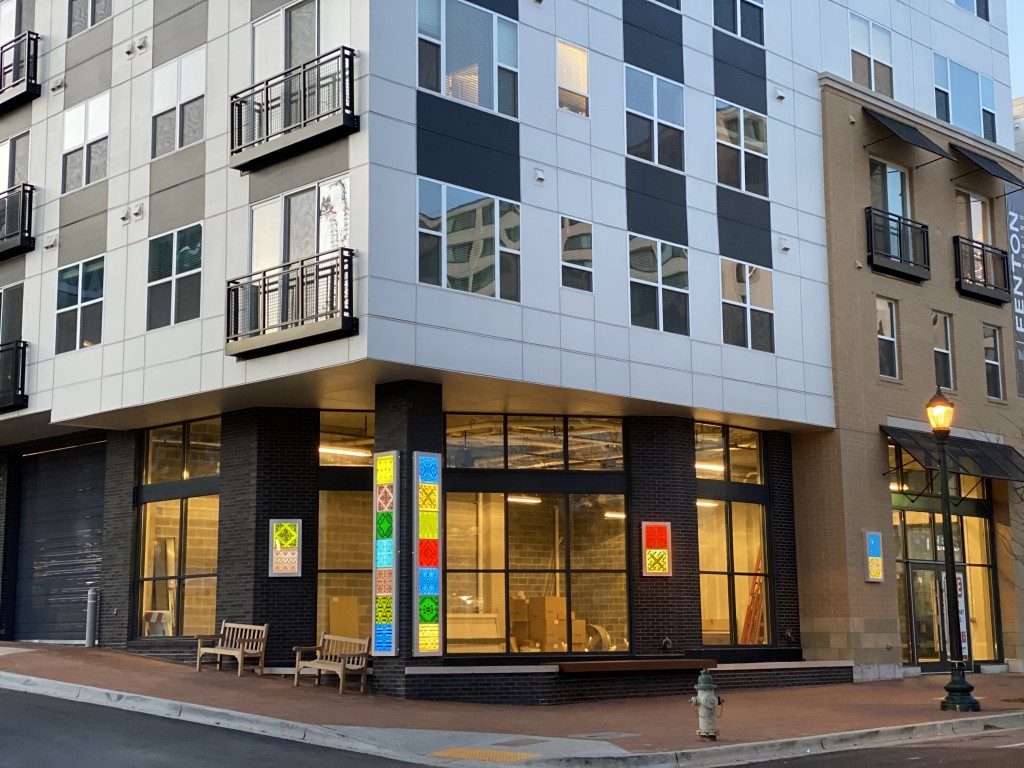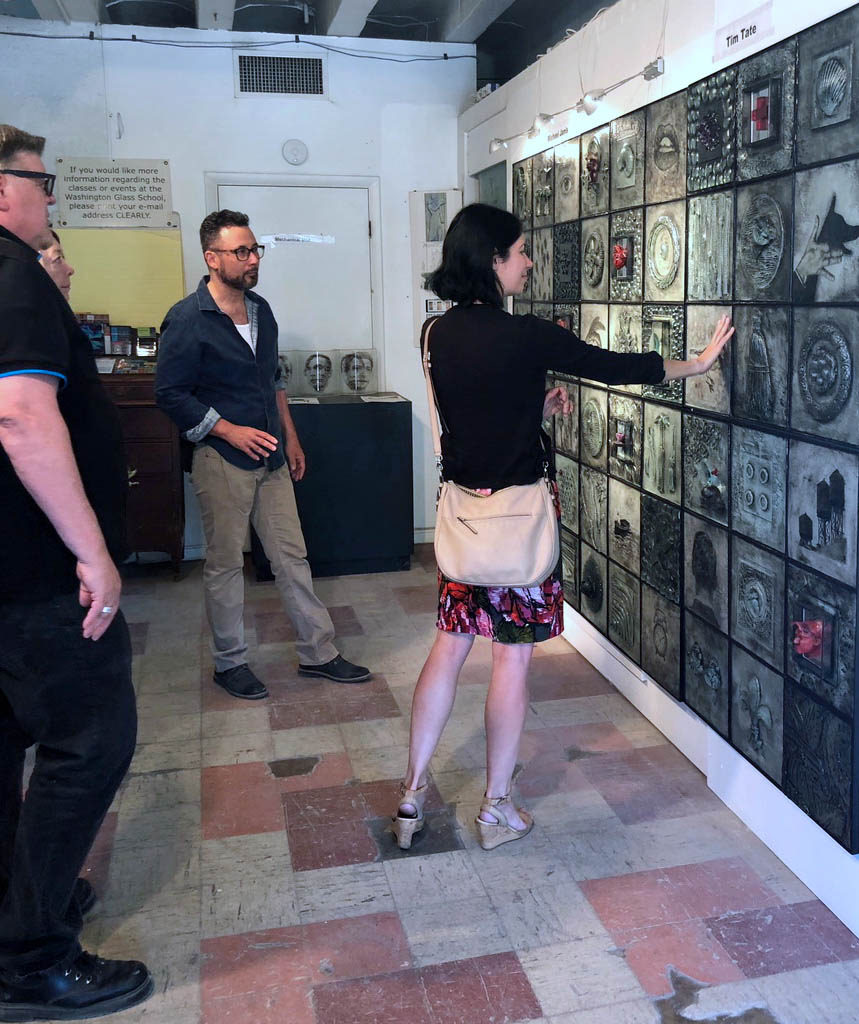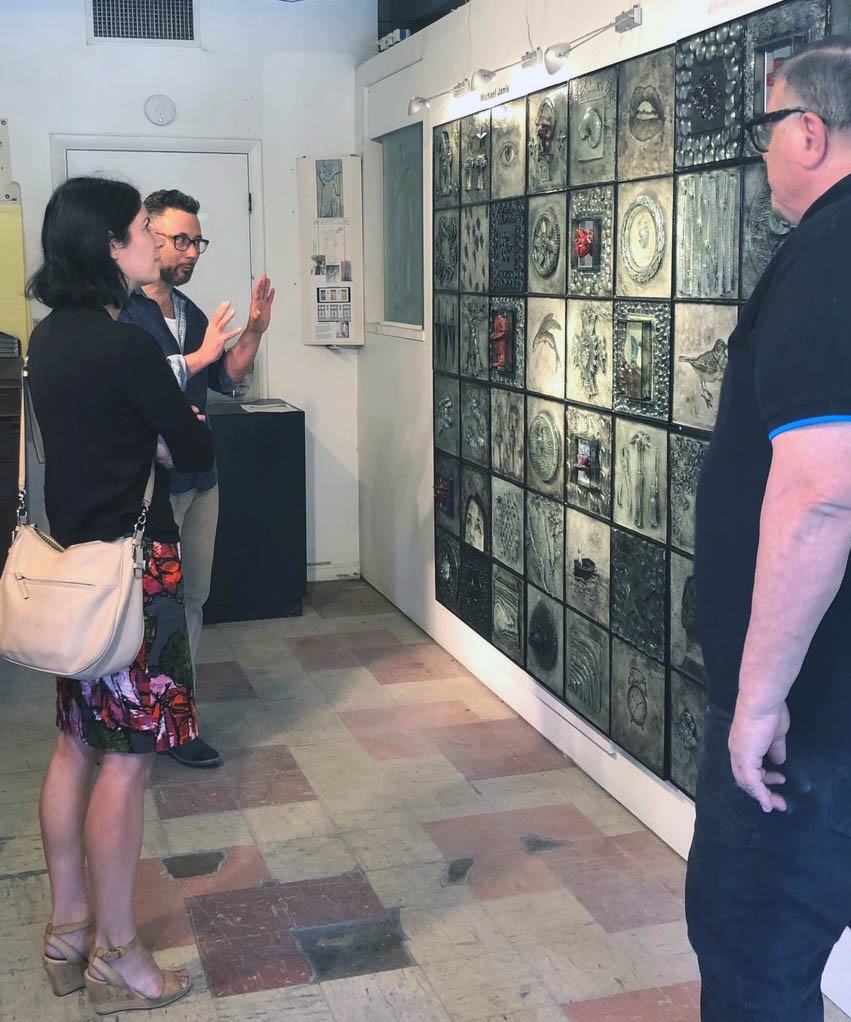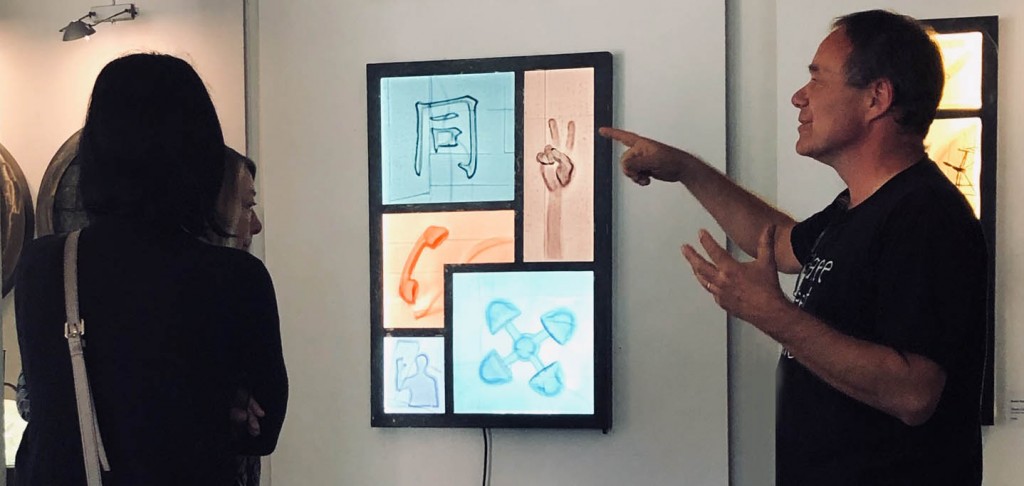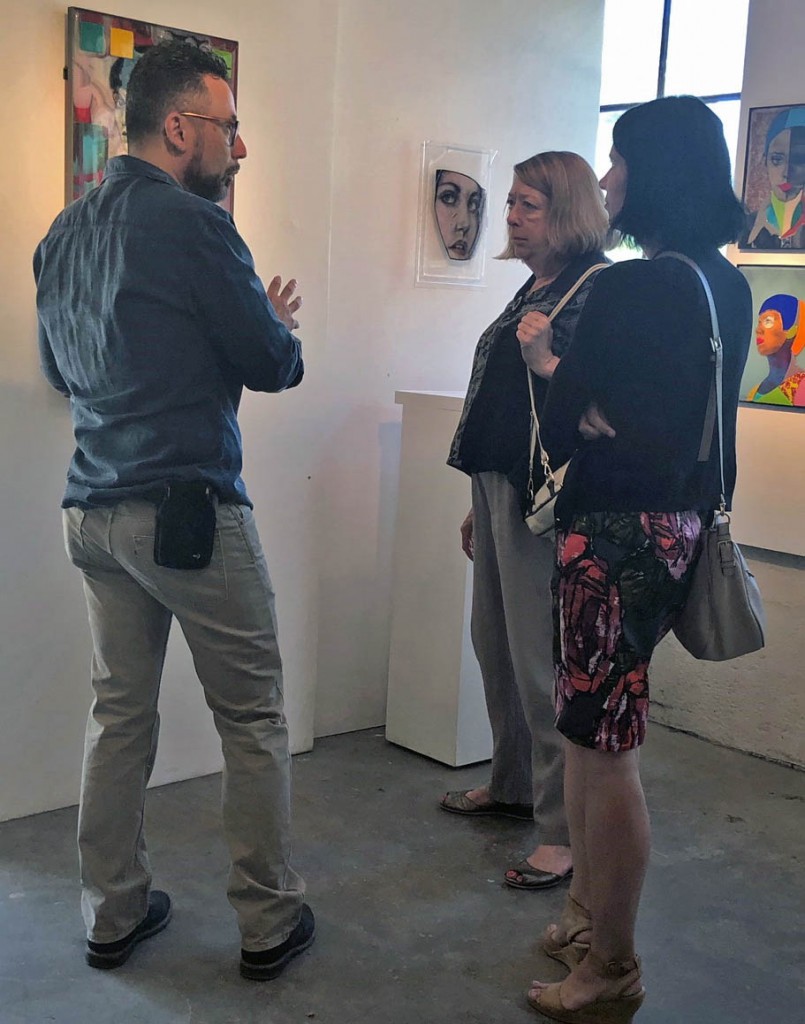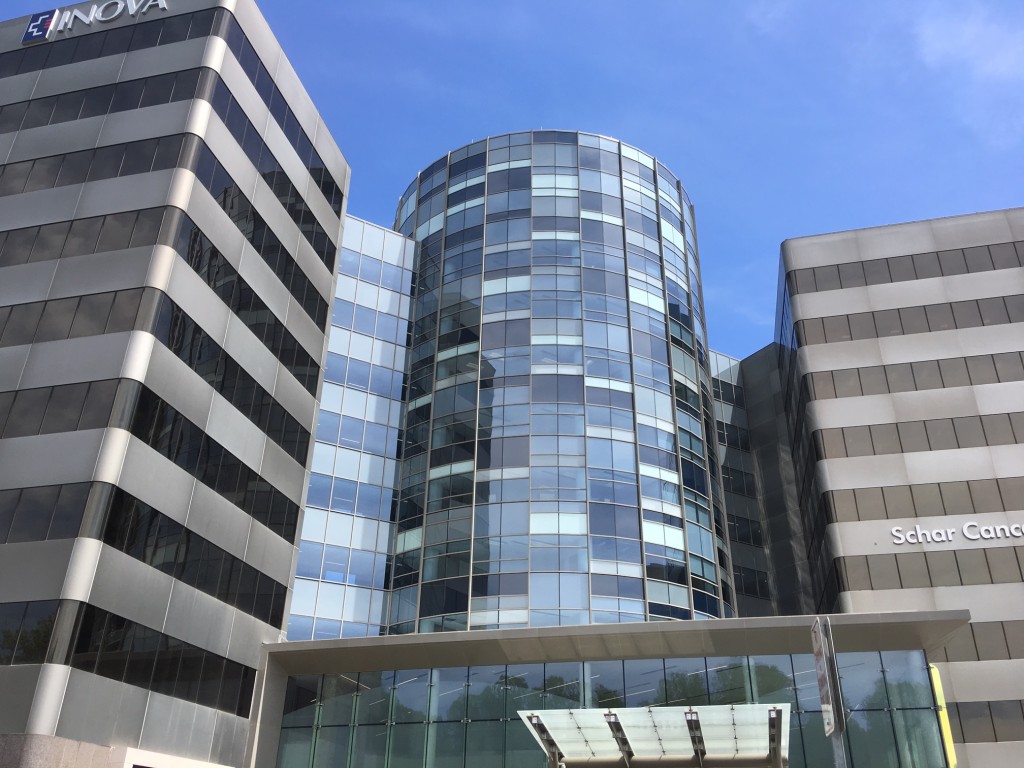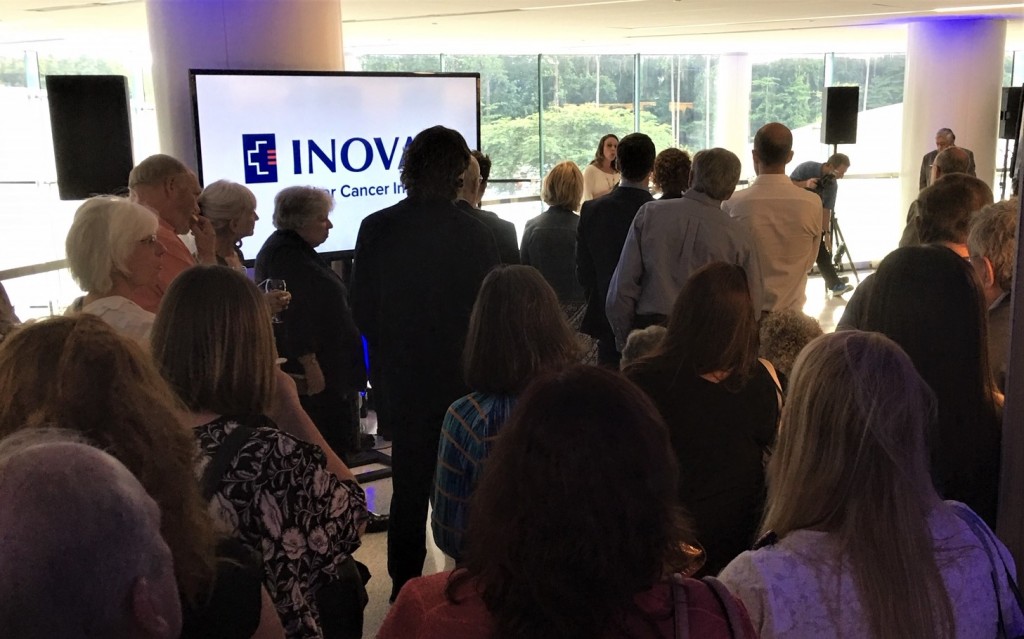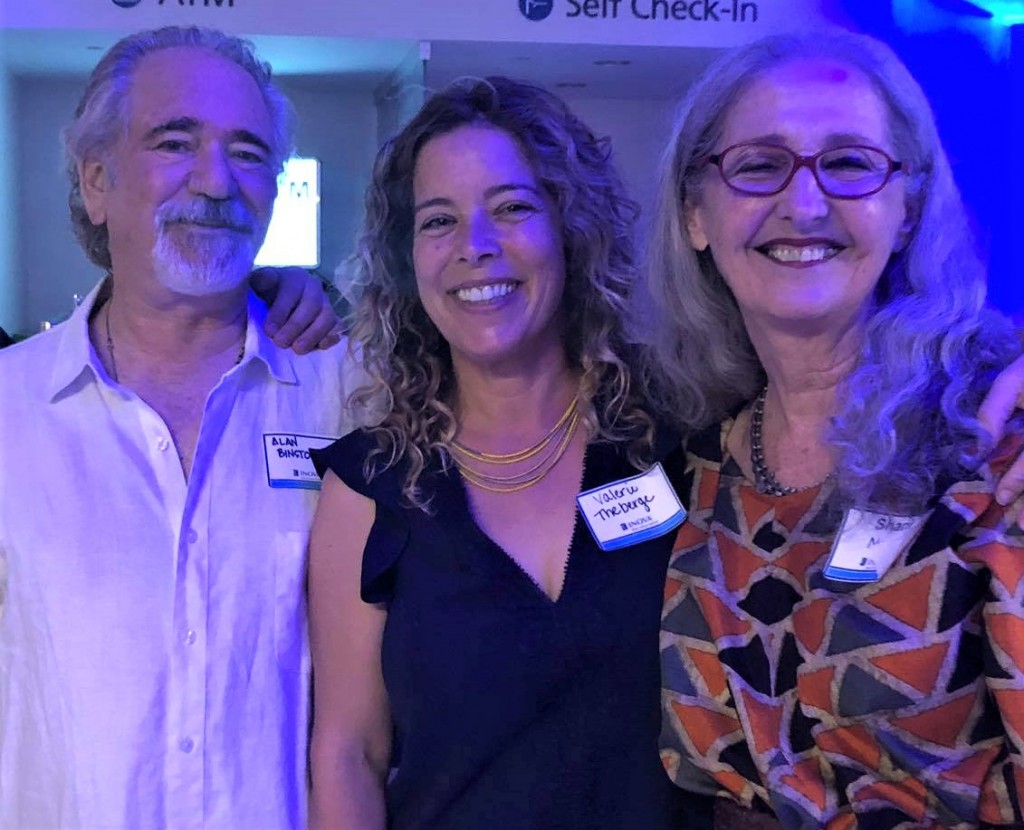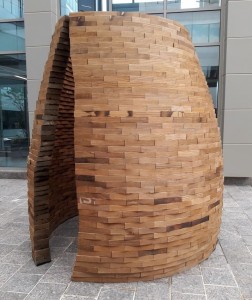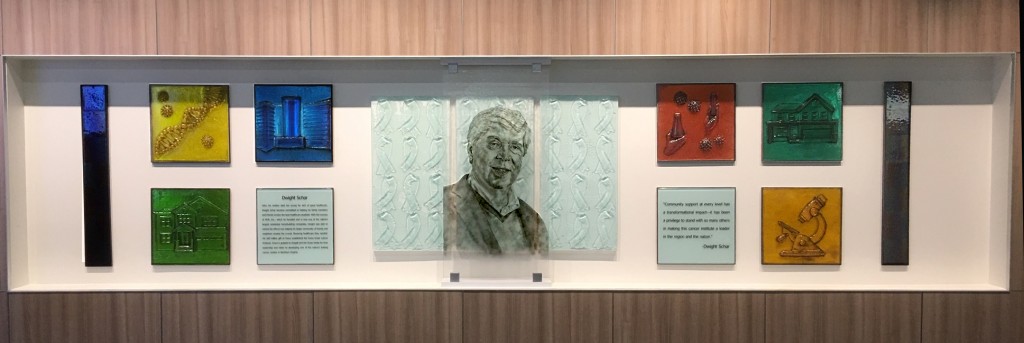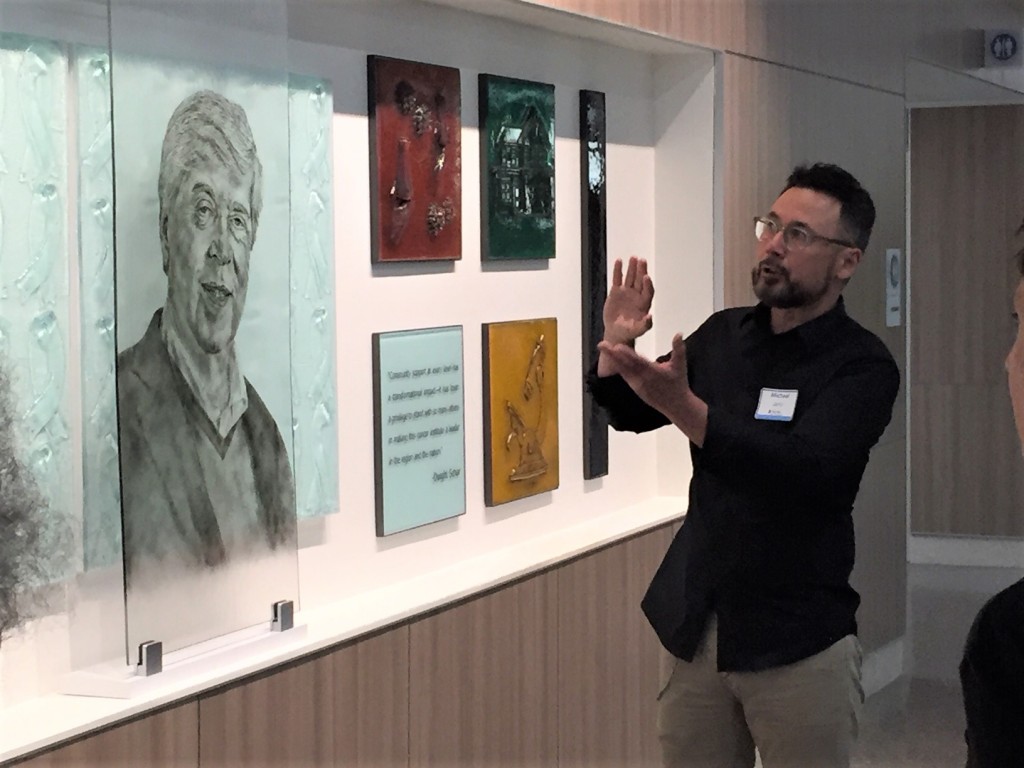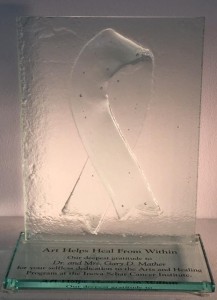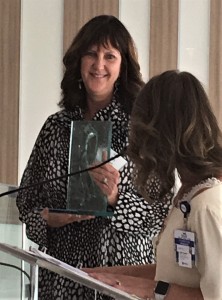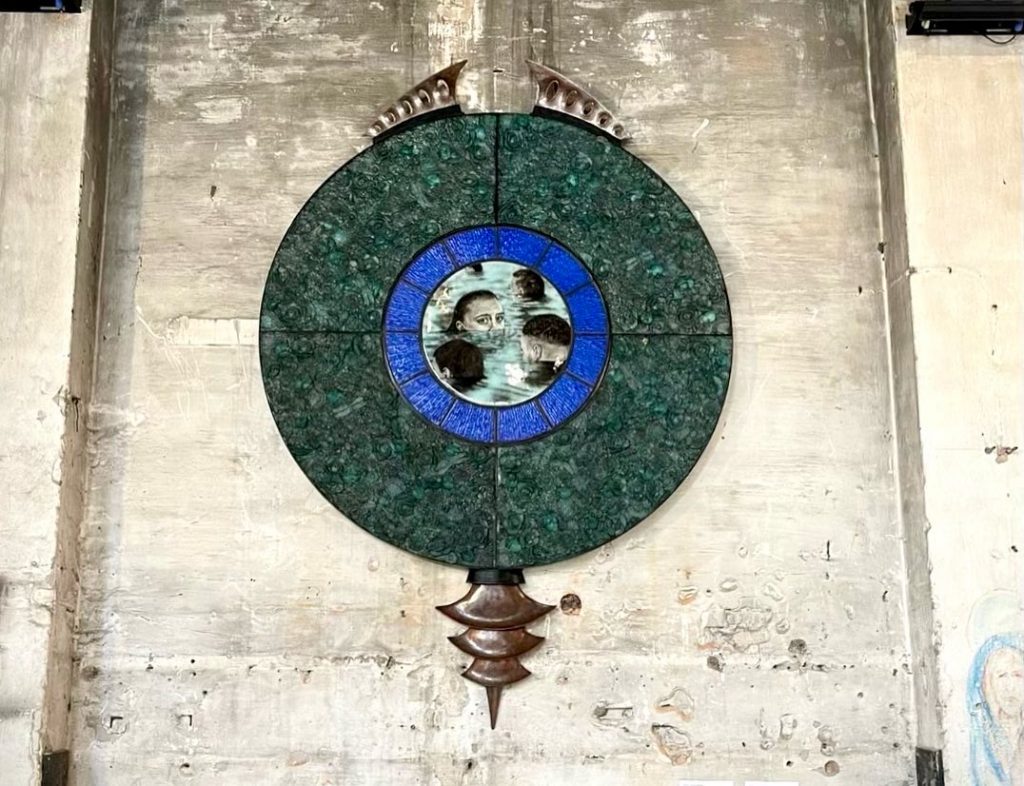
The Venice Biennale is an international art exhibition featuring architecture, visual arts, cinema, dance, music, and theatre that is held in the Castello district of Venice, Italy every two years during the summer. This year’s Venice Biennale includes a collateral event – ‘Glasstress’ – held at the historic Berengo Studios in Murano, Italy.
The 59th International Art Exhibition features a sculptural collaboration between DC glass artists Tim Tate, Michael Janis and Brandywine metal sculptor Chris Shea, representing the USA.
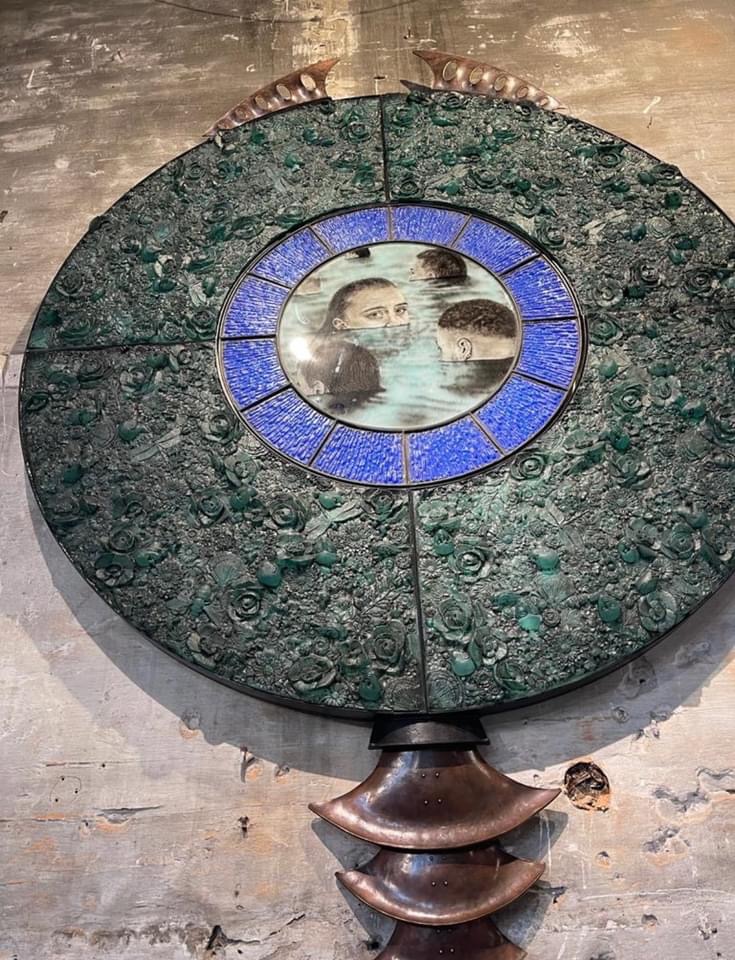
Chris Shea’s incredible metal work frames out Tim Tate’s lush fields of cast glass elements (detailed figures, flowers, insects) and in center, a glass sgraffito panel by Michael Janis.
A central concern in “There’s a Big Hole in The Sky” is that viewers need to abandon their apathy towards climate change. This monumental sculpture brings to light the effects of global warming on the earth as most areas will be facing frequent flooding. Despite the growing evidence of climate change, and humanity as the driver of that change, there remains a hardcore 20 percent or so that reject the whole notion of it and a healthy percentage that remain unconvinced that humans are causing it. And on top of those dismal statistics, many believe that climate change does not represent a threat to them. The artwork is an invitation to understand, to act, and to prepare. But if political solutions to climate change don’t materialize soon, it may also be an invitation to come to terms with loss.
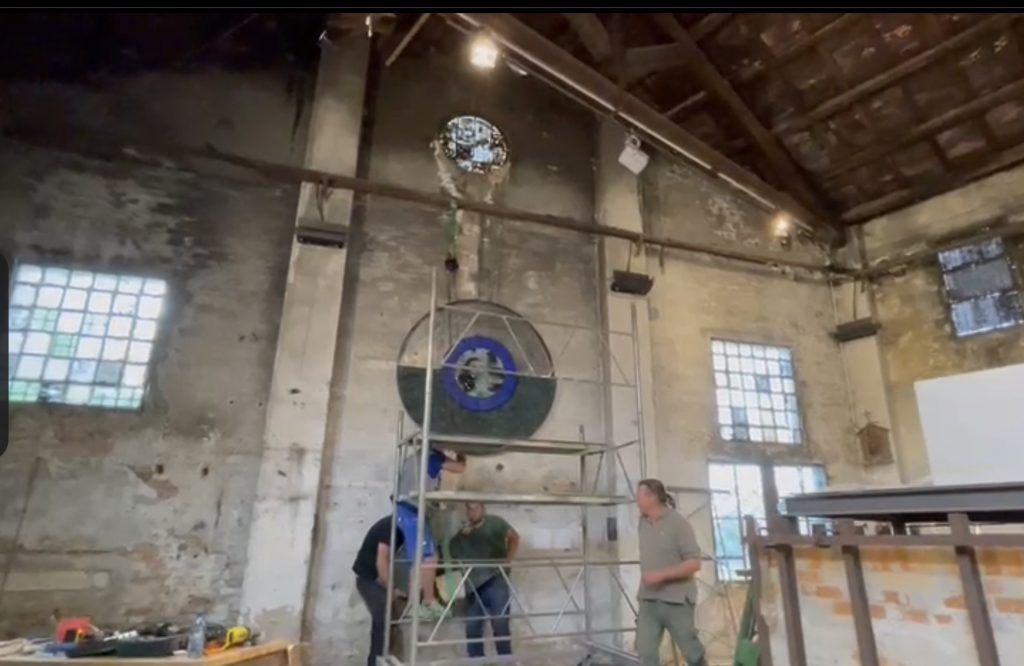
From Biennale Press Release
GLASSTRESS 2022
2 JUNE – 27 NOVEMBER 2022
BERENGO ART SPACE FOUNDATION
Venice, 2022
At the same time as the 59th Venice Biennale, the seventh edition of GLASSTRESS, scheduled from June 2 to November 27, 2022, brings together a group of important contemporary artists from Europe, the United States, Latin America, Africa and China in an ambitious exhibition that explores the infinite creative possibilities of glass.
The works will be housed in the Berengo Art Space Foundation in Murano, an old abandoned furnace transformed a few years ago into an evocative exhibition space. On display will be works by artists who have already collaborated and exhibited at GLASSTRESS with Berengo Studio, such as Ai Weiwei, Jimmie Durham, Tony Cragg, Monira Al Qadiri, Thomas Schütte, as well as first-time attendees Vanessa Beecroft, María Magdalena Campos-Pons, Tim Tate, Paloma Varga Weisz and eL Seed, among others.
GLASSTRESS is a project by Adriano Berengo dedicated to promoting new connections between contemporary art and glass. Starting from its debut in 2009 as a side event of the Venice Biennale, over the years GLASSTRESS has made dozens of internationally renowned artists and designers passionate about the traditional craft of Murano glass blowing, who have tried their hand at creating suggestive and innovative works in glass with the support of the masters of Berengo Studio.
GLASSTRESS 2022 – ARTISTS
NEW ARTISTS
Vanessa Beecroft (Italy), María Magdalena Campos-Pons (Cuba), Judy Chicago (United States), Chiara Dynys (Italy), eL Seed (France), Leandro Erlich (Argentina), Ryan Gander (Great Britain), Michael Janis (United States), Alexander Evgenievich Ponomarev (Russia), Laurent Reypens (Belgium), Liam Scully (Great Britain), Chris Shea (United States), Paloma Varga Weisz (Germany), Osman Yousefzada (Great Britain).
RETURNING ARTISTS
Ai Weiwei (China), Monira Al Qadiri (Kuwait), Ayman Baalbaki (Lebanon), Tony Cragg (Great Britain), Jimmie Durham (United States), Jan Fabre (Belgium), Josepha Gasch-Muche (Germany), Kendell Geers ( South Africa), Marya Kazoun (Lebanon / Canada), Brigitte Kowanz (Austria), Karen LaMonte (United States), Tomáš Libertiny (Slovak Republic), Massimo Lunardon (Italy), Federica Marangoni (Italy), Prune Nourry (France), Anne Peabody (United States), Jaume Plensa (Spain), Laure Prouvost (France), Thomas Schütte (Germany), Sean Scully (United States), Wael Shawky (Egypt), Lino Tagliapietra (Italy), Tim Tate (United States) , Koen Vanmechelen (Belgium), Robert Wilson (United States), Rose Wylie (Great Britain), Erwin Wurm (Austria).
